Affiliate links on Android Authority may earn us a commission. Learn more.

Samsung Galaxy S7
What we like
What we don't like
Our scores
Samsung Galaxy S7
From plastic in 2014 to glass and metal in 2015, last year saw the biggest revolution in Samsung’s mobile portfolio since the launch of the first Galaxy S itself. The Galaxy S6 family was certainly a looker and sought to address many concerns users had over what had previously been, a stagnating product line-up.

One year on and Samsung has arguably learnt from last year and has sought to differentiate the two smartphones in size as well as stature. The Galaxy S6 and S6 Edge were definitely some of the best smartphones of 2015, but the question facing Samsung this year was how to make an already-very-good smartphone, even better.
- Samsung Galaxy S7 specs, features, price, release date, and more
- Best Galaxy S7 Cases
- LG G5 and Galaxy S7 vs the competition
- Samsung Galaxy S7 and S7 Edge problems and how to fix them
From further perfecting the design to improving features under the hood, and addressing consumer concerns over last year’s line up, Samsung had a few areas that it could improve on to truly make the Galaxy S7 a show-stopping device. Does it deliver, or is the Galaxy S7 a case of “style over substance”? This is what we aim to find out – and more – in this full review of the Samsung Galaxy S7.
Design
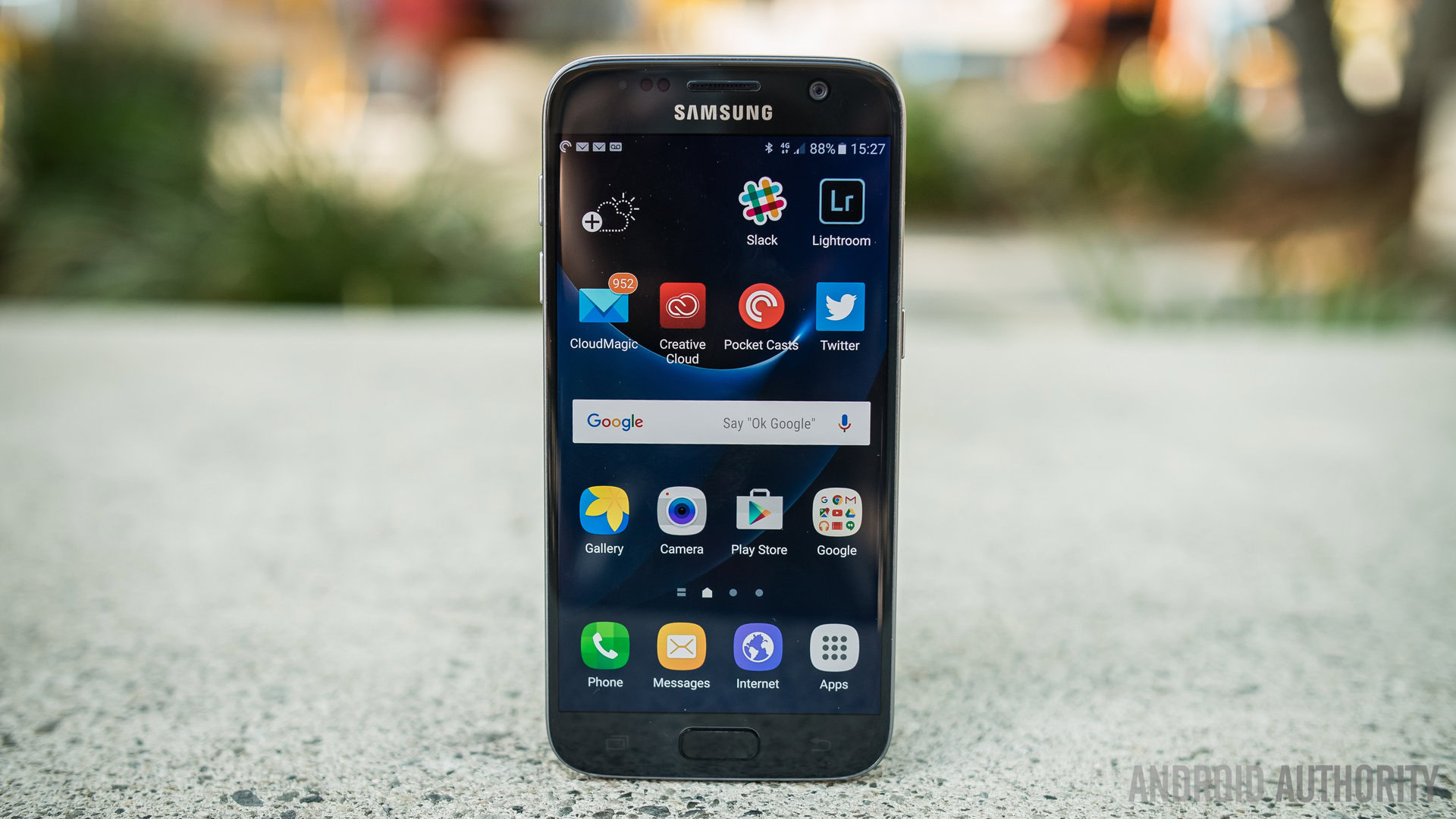
While this year saw Samsung increase the screen size of the Galaxy S7 Edge, the Korean manufacturer has largely kept the same design in the Galaxy S7. With no change to the screen size or materials, the Galaxy S7 merely aims to refine the Galaxy S6 design, as opposed to revolutionise it like we saw last year.
Which is definitely not a bad thing; the Galaxy S6 was certainly a striking smartphone – albeit it was overshadowed by the Galaxy S6 Edge – and by changing the screen size on the Galaxy S7 Edge, Samsung has further ensured that sales of one of its new smartphones won’t cannibalize sales of the other. Out of the shadow of its bigger brother, what refinements have been made to the Galaxy S7, or is it a case of more of the same?
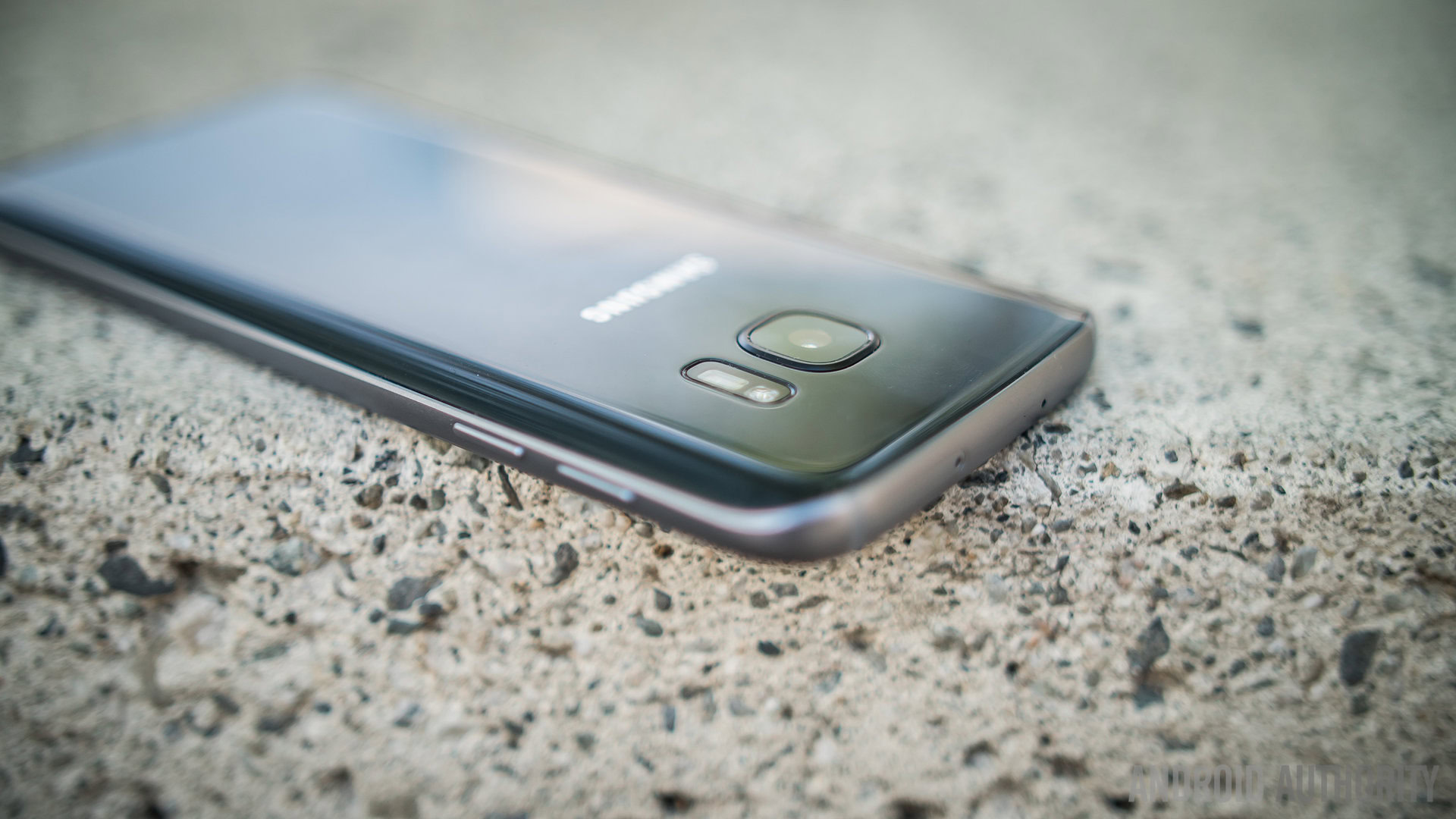
At first glance, the Galaxy S7 certainly looks very similar to its predecessor, but Samsung has managed to sneak in a few improvements to the design. First, the camera bump has been noticeably reduced so it barely protrudes from the rear; with the Galaxy S6, there was always a concern over laying it flat on its back, but with the Galaxy S7, this is no longer really a problem.
Secondly, the Galaxy S7 is noticeably thicker and heavier than the Galaxy S6 at 7.9mm and 152 grams (versus 6.8mm and 138 grams). The added girth definitely helps with gripping the smartphone, and the extra thickness means Samsung has been able to cram in a larger battery, which we’ll talk about later in this review.
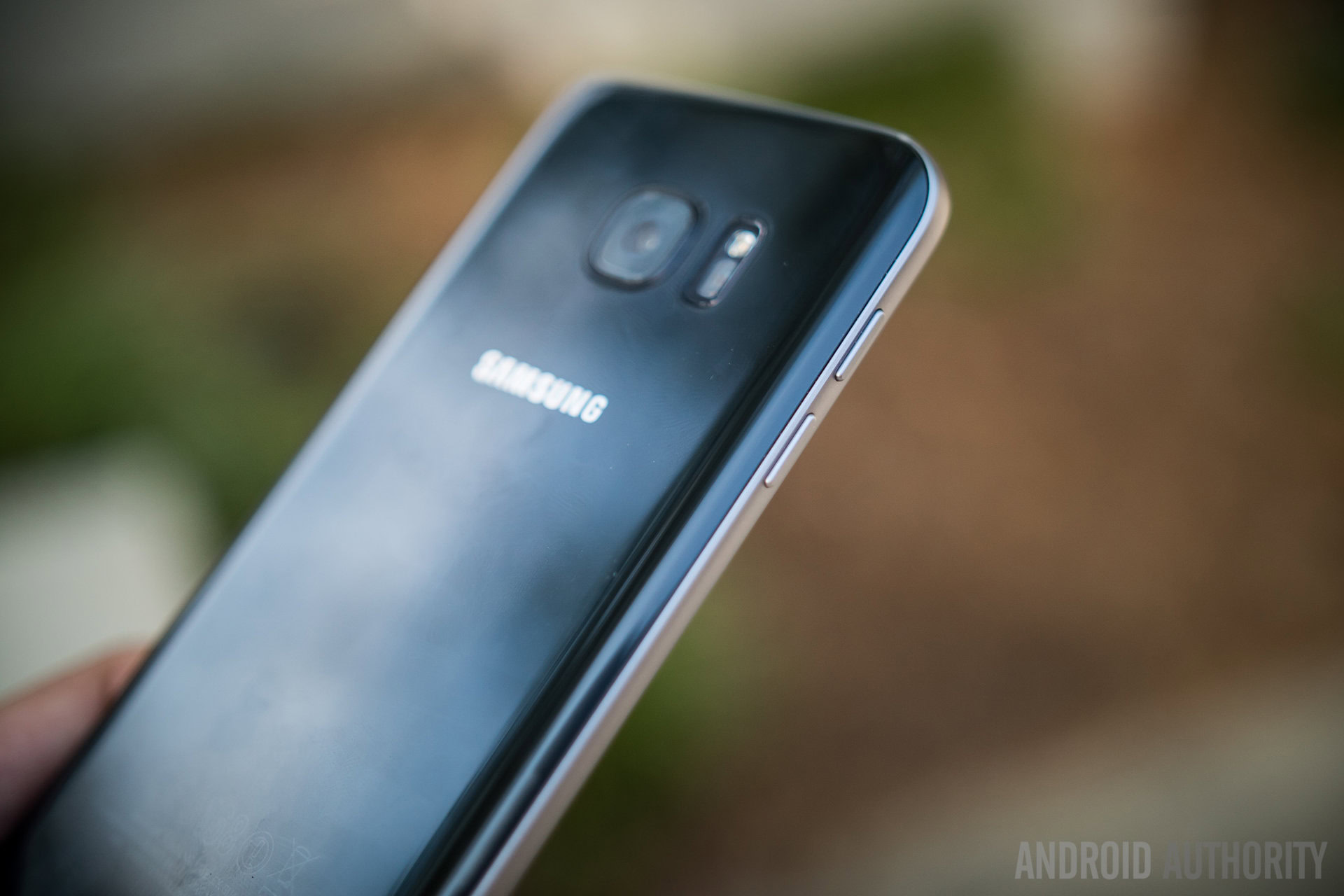
By far, the biggest improvement to the user experience is the dual curved rear, which was initially found on last year’s Galaxy Note 5. Designed to make the smartphone more ergonomically friendly, the rear plate is similar to the curved front of the Galaxy S7 Edge (which also gains a dual curved rear) and, combined with a metal frame sandwiching two planes of glass, the Galaxy S7 is even nicer in the hand that the Galaxy S6 was.
The Galaxy S6 was certainly a striking smartphone and the tweaks in the Galaxy S7 have made it even nicer to use and hold. Talking with Josh, we both agree that:
The Galaxy S7 is the most perfectly designed and perfectly sized Samsung phone ever created.
Josh went on to say that once you begin to grip and use the Galaxy S7, the handset feels smaller than it actually is, and I have to agree with this. As a user who’s accustomed to larger displays – like the ones found in the Galaxy Note range for example – the Galaxy S7 does at times feel too small for me, but that’s a personal preference. Josh tends to disagree with me by saying that the smaller size makes the handset perfect for those who touch type, but we both agree that the Galaxy S7 is definitely the most comfortable in-hand experience you’re going to get. If you’re someone who’s accustomed to smaller displays or are moving over from the iPhone, you’ll likely find the Galaxy S7 is actually the perfect size for you.
One of the biggest issues I found with last year’s Galaxy S6 family was the glass back, as it was prone to attracting fingerprints, and although the company has introduced a new coating to reduce this, the Galaxy S7 is still rather prone to this. The glass finish also means the Galaxy S7 can be quite slippery – although I’ve not yet felt like it is going to slip out of my hand – but most people will keep their phone in a case rendering this, and the fingerprint nature of the handset, a relatively moot point.
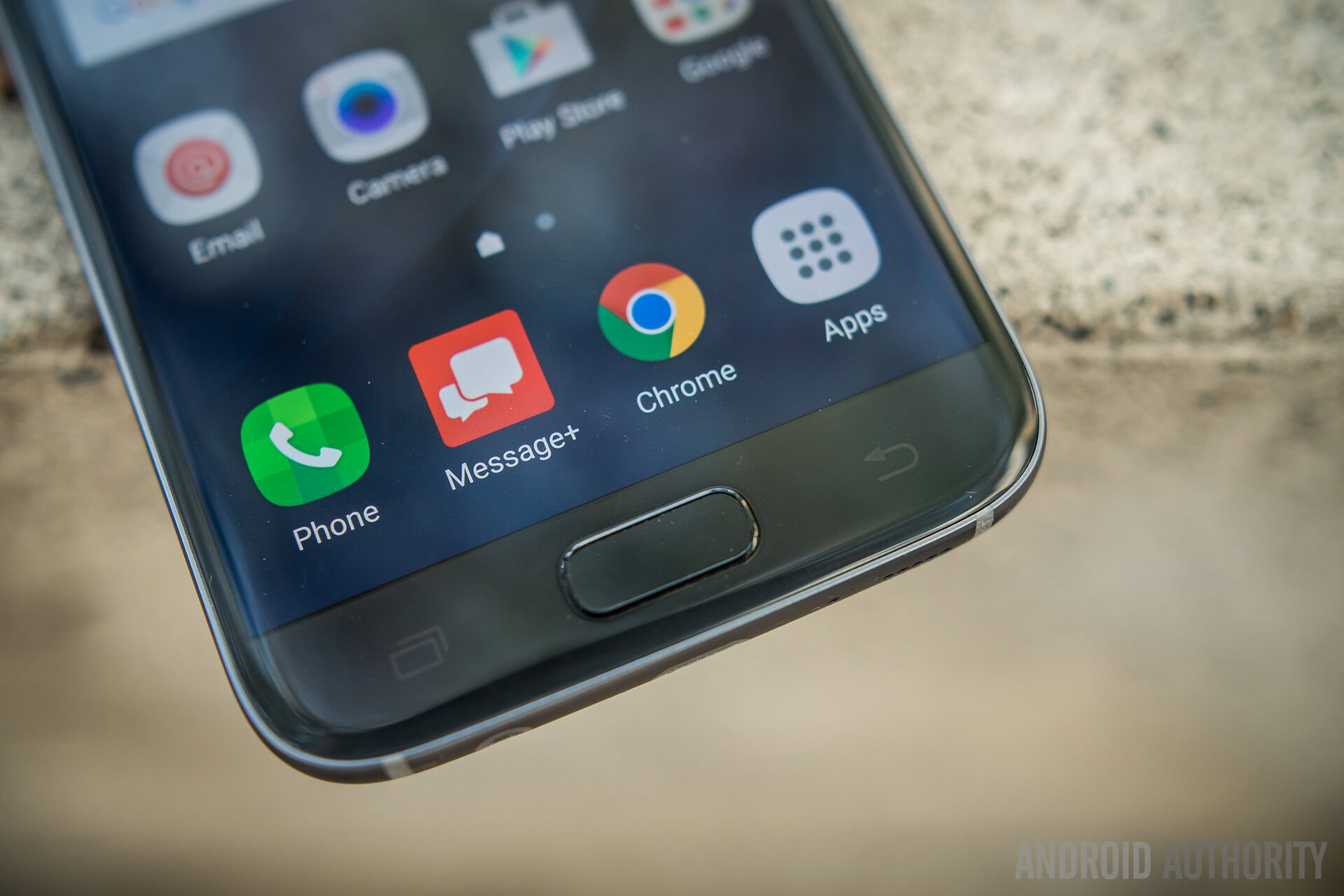
Moving on to the rest of the Galaxy S7 and not a lot has changed over last year. On the front you’ll find Samsung’s home button – which houses the fingerprint sensor – flanked by the recent apps and back keys. On the left you’ll find the volume keys, while on the right is the power button. Up top is the microSD and SIM card tray (more on that later) while at the bottom, is the microUSB port.
In an era where more smartphones are moving towards USB Type-C and all the benefits (and problems) that it brings, Samsung has opted to stick to the older but tried-and-tested USB type. There’s a couple of reasons behind this, not least the Gear VR, which the company has included free for most people who pre-ordered its new smartphones. As the Gear VR hit the shelves last year and comes with a microUSB connection, it makes sense that Samsung wouldn’t want to change connection standard so quickly. The company could have taken the connector approach, but by sticking with microUSB, it has ensured that the Gear VR continues to work with its new smartphones without further confusing its consumers.
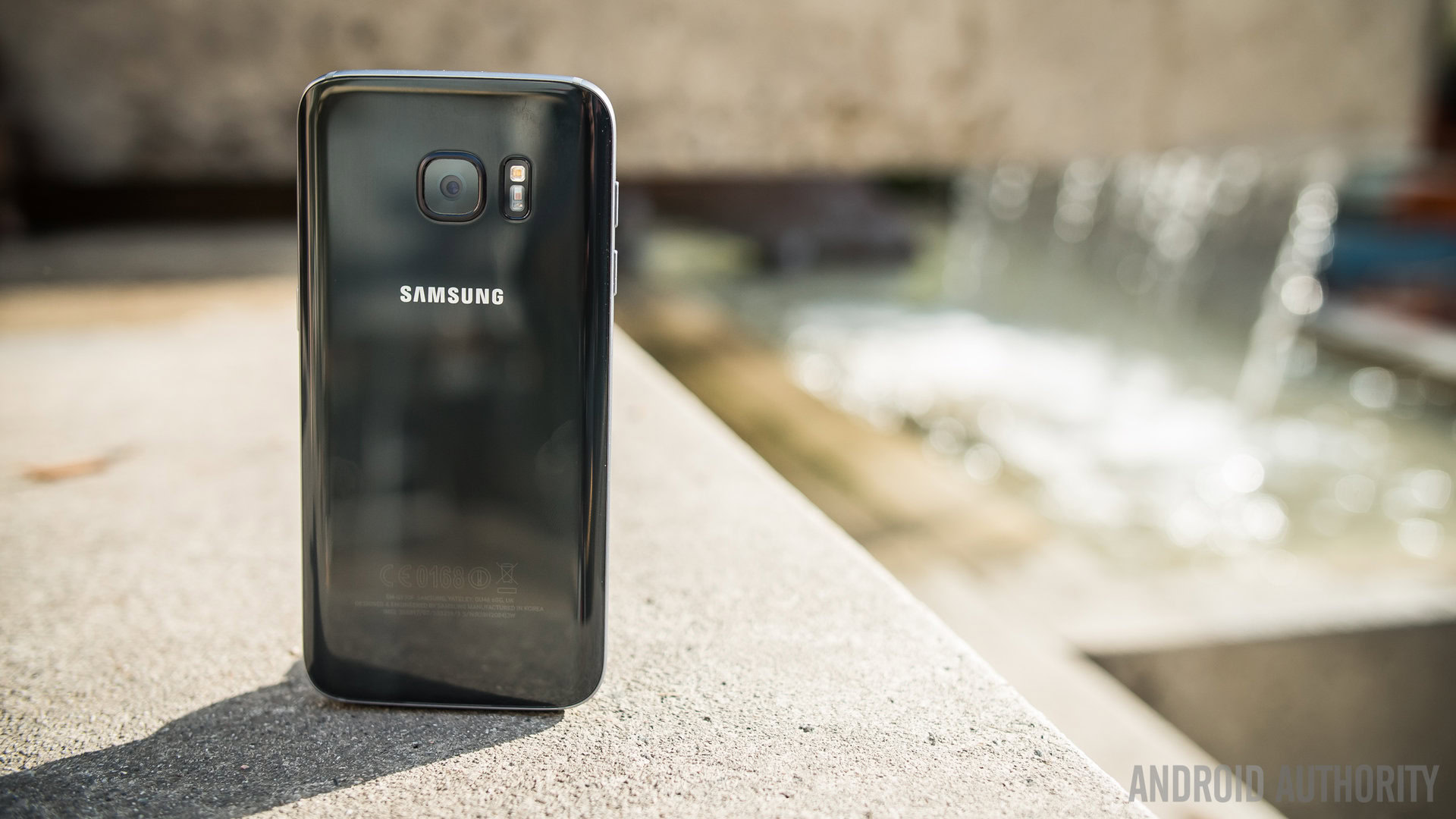
Furthermore, USB Type-C hasn’t quite hit the mainstream as yet and the majority of accessories still rock the older connection standard. As someone who has a few devices with the new USB standard but a large collection of older microUSB cables, I can safely say that Samsung’s decision to stick with microUSB is certainly not a problem for me, and many people will likely agree with that.
easily one of the best designed smartphones in the mobile world
Overall, the Galaxy S7 may look very similar to the Galaxy S6, but the company has made a few tweaks to further refine its Galaxy S experience. From improving the dyeing of the glass – so that the Black version is now actually Black and not blue – to perfecting the in-hand experience, Samsung has created what is easily one of the best designed smartphones in the mobile world.
Display
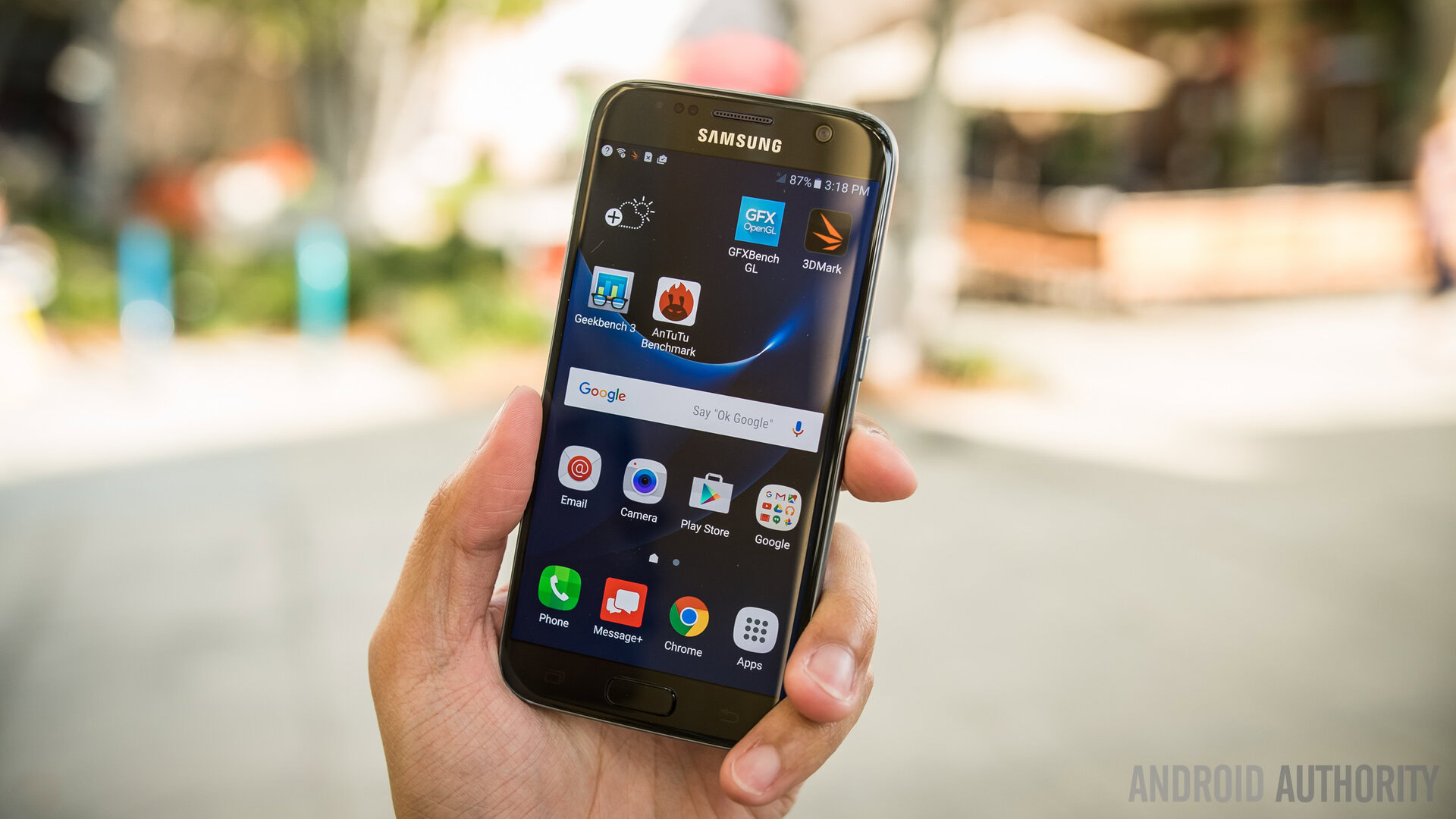
One of the principal reasons behind Samsung’s meteoric rise to the top of the smartphone food chain is the company’s vertical integration with other companies that form the Samsung Group. In Samsung Display, the Korean OEM has access to the world’s largest display company and – as we’ve seen with previous smartphones – Samsung definitely knows how to use this to its advantage.
When it comes to displays, Samsung has shown over the years that its Super AMOLED displays deliver some of the finest viewing experiences possible on a smartphone. Year on year, there’s very little – if any – difference between the Galaxy S6 and the Galaxy S7 as both screens measure 5.1-inches with QHD (2560 x 1440 pixels) resolution.
The Galaxy S6 display was certainly impressive and the Super AMOLED display on the Galaxy S7 continues this trend, by offering vibrant and heavily saturated colours, dark inky blacks and brightness that makes the screen legible in even the brightest conditions. As someone who’s become accustomed to Samsung’s displays on smartphones, I can say that the Galaxy S7 is a joy to use, even if it does appear to be very similar to the Galaxy S6. As the adage goes: if it isn’t broken, why try to fix it?
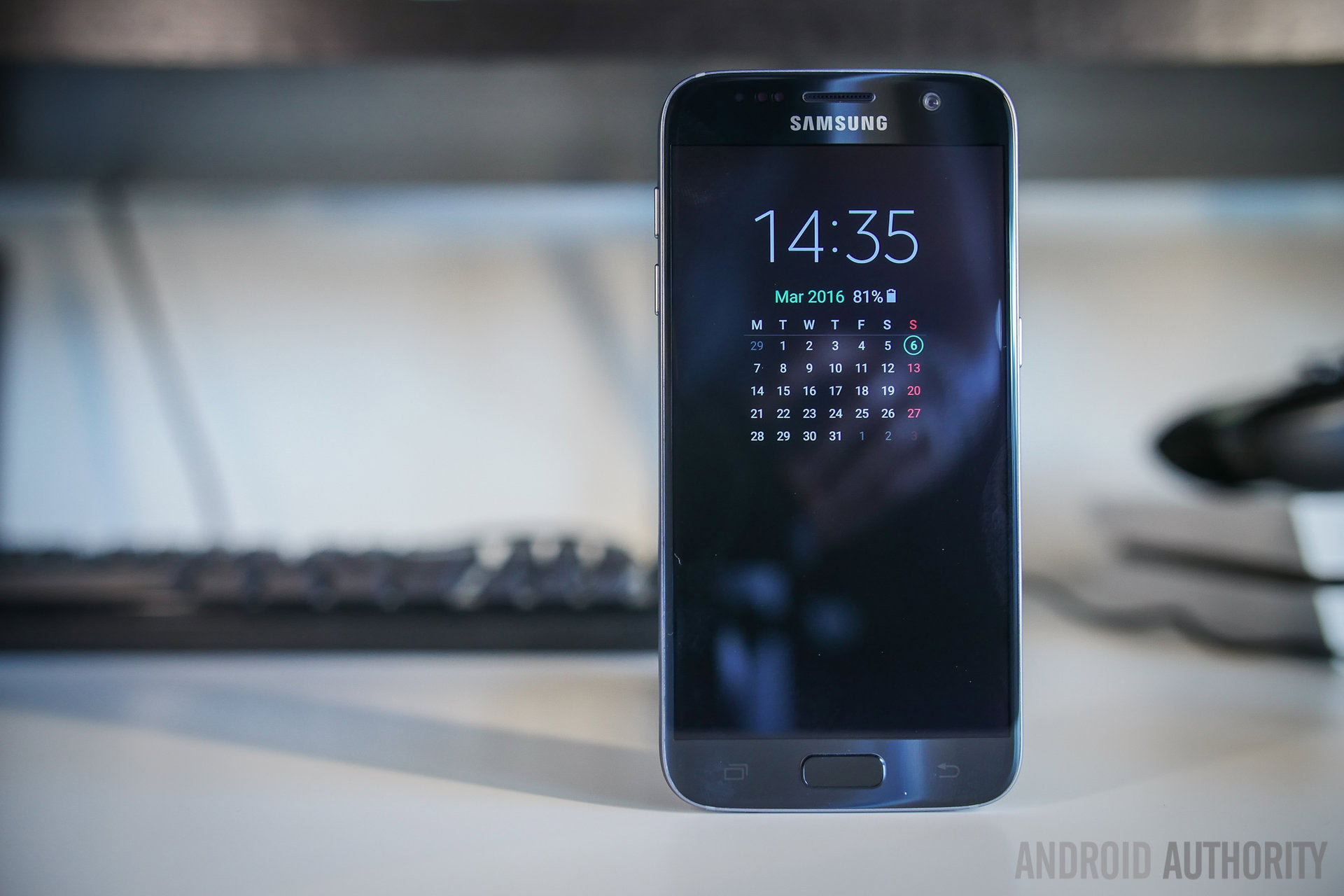
One change found in the Galaxy S7 is the new “Always On Display”, which seems to be a buzz word we’ll hear a lot more of in 2016. Arguably a software feature as opposed to hardware related, the feature is still related to the AMOLED technology, which allows Samsung to light up the individual pixels required for this feature. This is in contrast to LCD displays, which would require an OEM to turn on the entire screen, and this means the Always On Display has very little impact on the battery life.
The Always On Display may appear to be quite useful but once you dig into it, there isn’t a lot of substance to the feature. At the moment, it’s limited to displaying information from Samsung’s own apps at a glance, but once Samsung opens the feature up to more developers, you should hopefully be able to see information from apps such as Hangouts or WhatsApp (and hopefully, any application that chooses to support the feature).
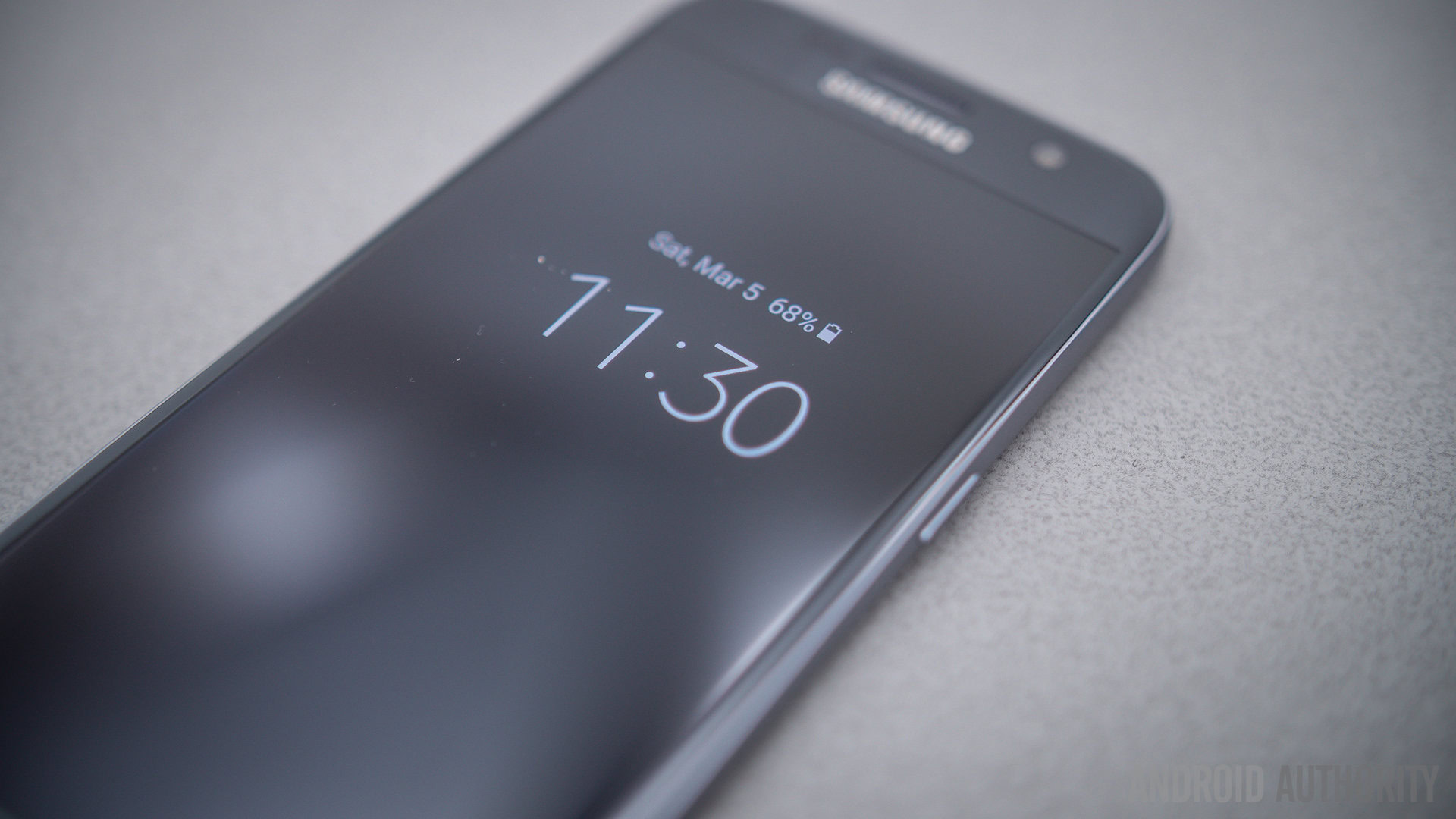
At the moment, the Always On display is mostly useful for seeing the time at a glance or seeing your calendar – there is an option to display an image but this is mostly pointless in my opinion – but whether the feature grows in usefulness with use, does depend on Samsung. The good news is, if you have no need for the always on display, Samsung makes it simple to disable it in the settings menu.
One area of the display that has been quite drastically changed from previous years is how the Galaxy S7 manages brightness. Josh and I both agree that – unlike previous devices – the brightness slider is very sensitive and indicative of the brightness. To this effect, moving the slider to the far left turns the brightness down too low to make the display legible (even in dark conditions) so you have to micro manage the brightness a lot more than you did in previous years.
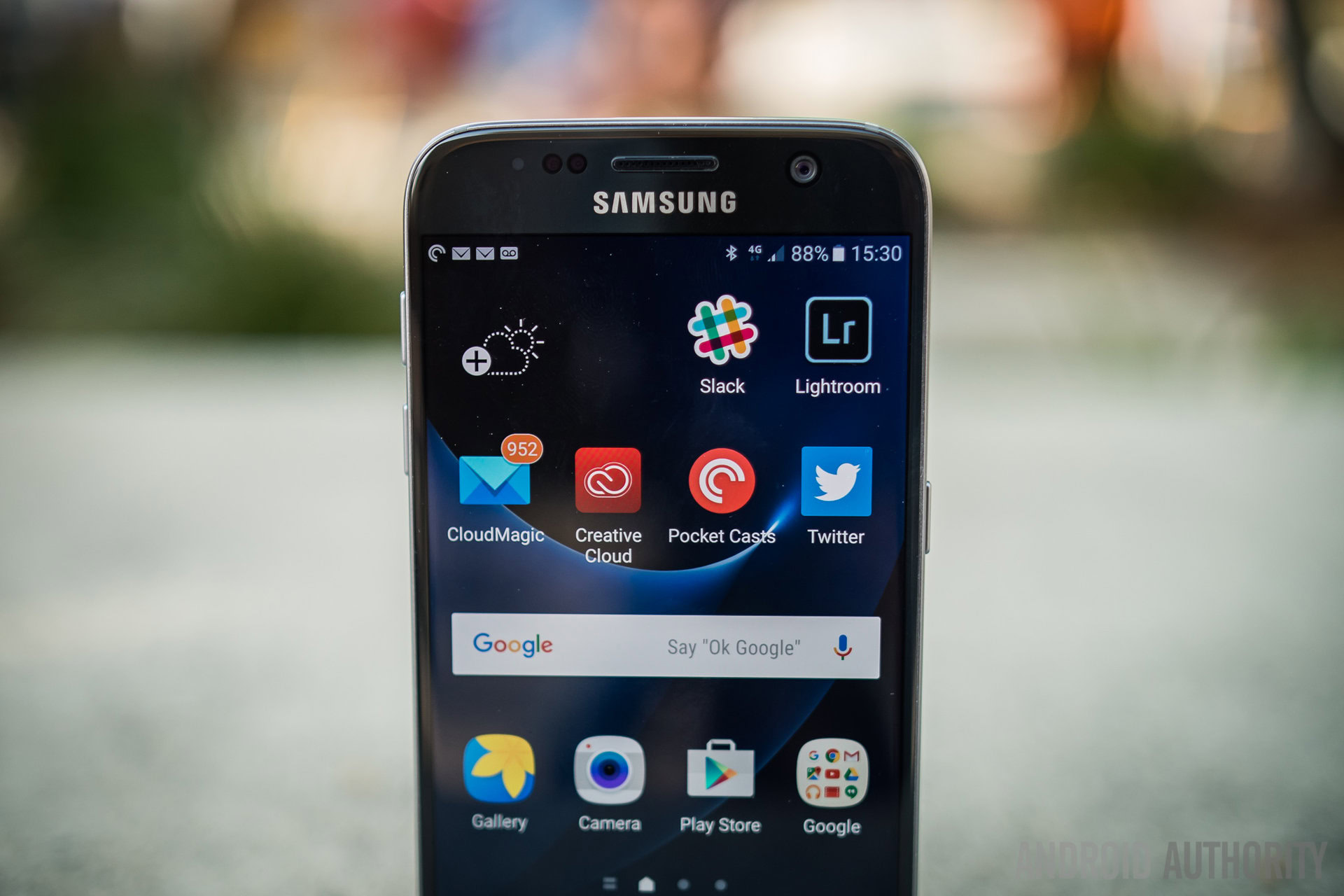
I’ve personally also noticed that the auto brightness can occasionally take a little longer than expected to adjust to changes in ambient lighting. While other smartphones do seem to provide a minimum nits brightness the display can be turned down to, Samsung allow you to right down to almost nothing and on average, you have to leave your brightness at around 35-40% indoors in order for the screen to be legible.
Overall, the Galaxy S7 display is certainly on par with previous Samsung devices, and while the tweaks in the responsiveness of the brightness and the addition of an Always On display do change the experience slightly, it’s still one of the finest smartphone screens on the market.
Performance & Hardware
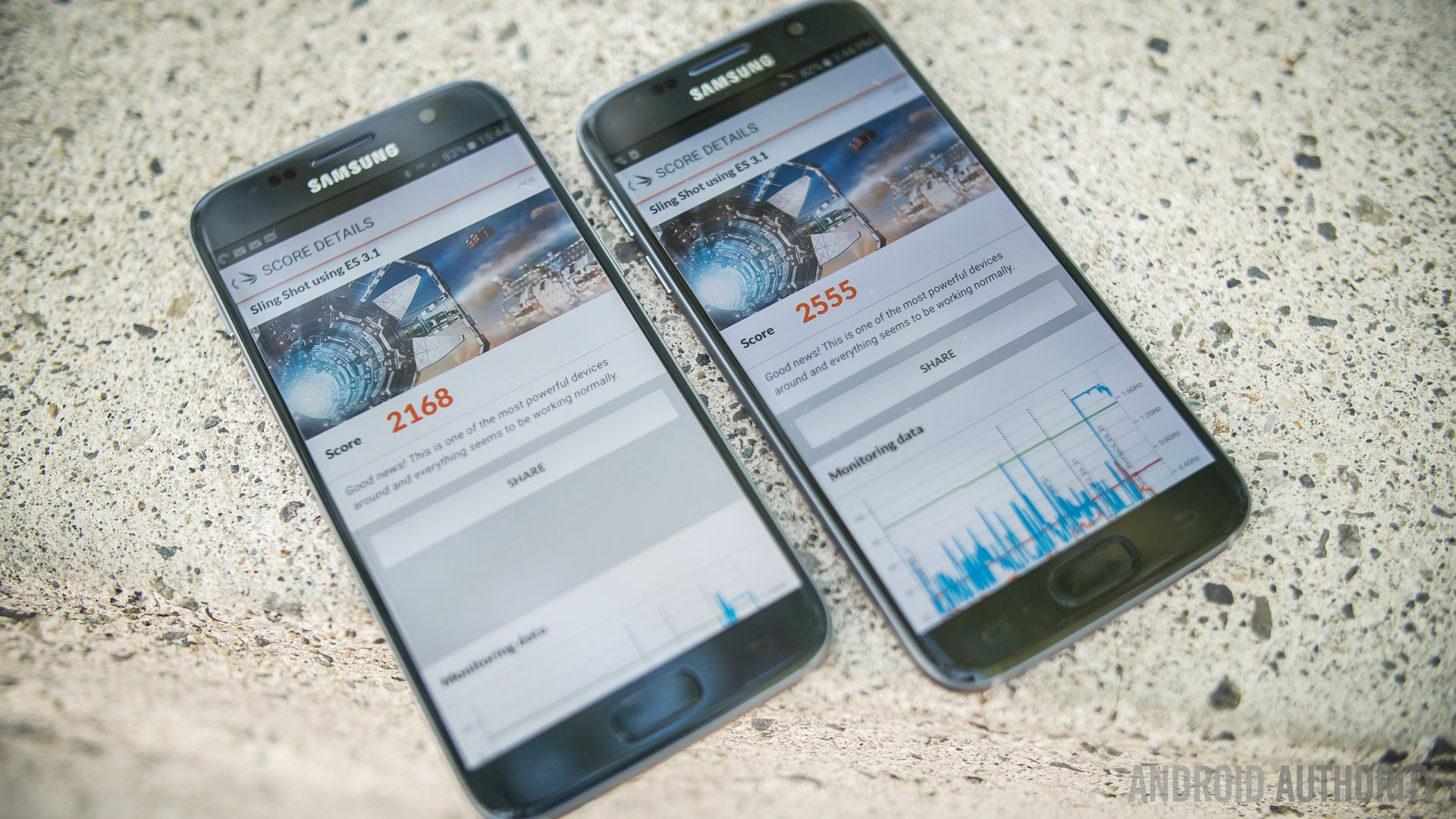
One of the rather more contentious parts of the Galaxy S7 is Samsung’s choice to offer two different versions with rather different processors. Last year, the company chose to only power all versions of the Galaxy S6 with its own Exynos 7420 chipset – like due to the negative stigma associated with the Snapdragon 810 – but this year, the company has returned to its previous convention of offering different chipsets.
A tale of two chipsets
Most users who buy the Galaxy S7 will be purchasing one powered by an Exynos 8 Octa (8890) – consisting of a quad-core 2.6GHz Mongoose and a quad-core 1.6GHz Cortex-A53 – paired with a Mali-T880 GPU and 4GB RAM. However, if you’re in the US or China, you’ll be getting a Snapdragon 820 – which consists of a dual-core 2.15GHz Kryo and dual-core 1.6GHz Kryo – along with an Adreno 530 GPU and 4GB RAM.
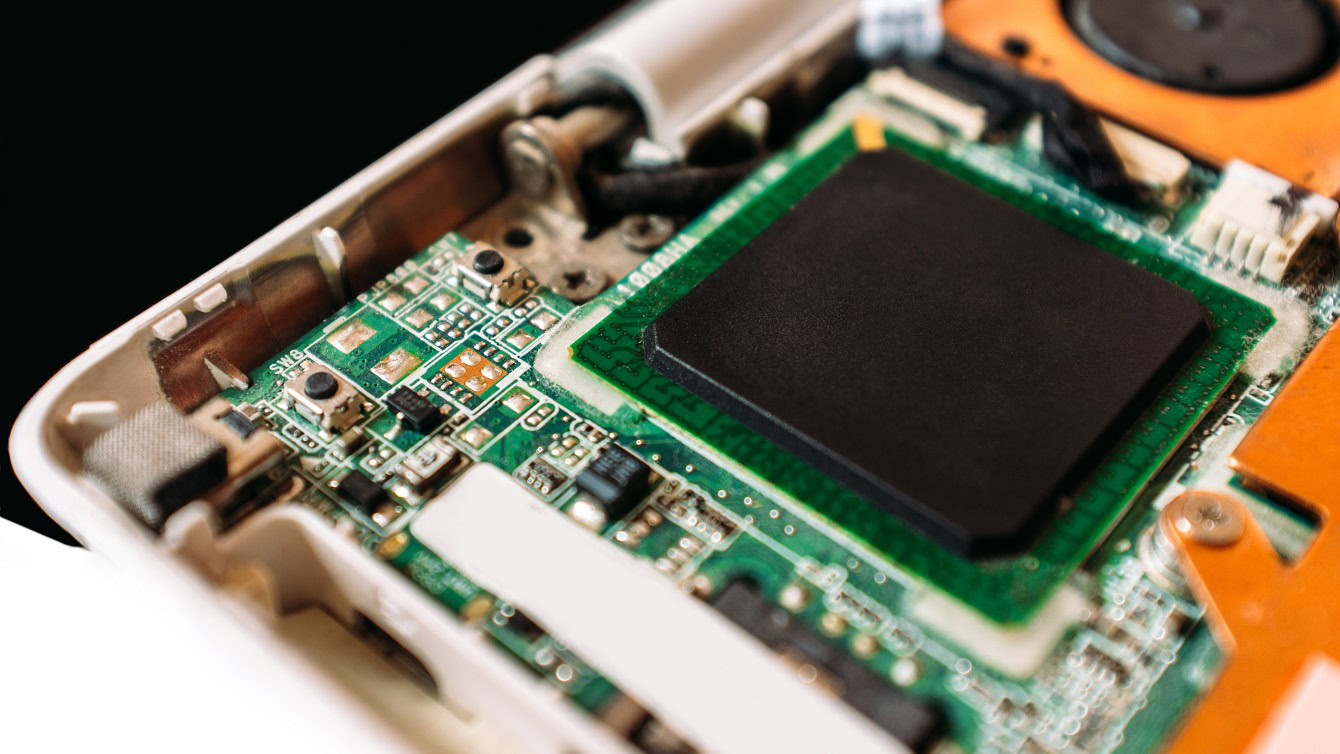
On paper, the two processors are very different, with one being an octa-core and the other, a quad-core, but what about in actual usage? Does a particular chipset offer a significant advantage over the other, and what about the differences in the GPU? To illustrate any differences adn establish which version has the upper hand, we’ve run a series of benchmark tests on both versions of the Galaxy S7, including AnTuTu, 3DMark and GeekBench 3.
Kicking our tests off with GeekBench 3, you can see that the Exynos version achieved a single-core score of 2063 and a multi-core score of 6267, while the Snapdragon version scored 2269 and 5156 respectively. It’s unsurprising that the Exynos version has the upper hand for the multi-core score, considering that it’s an octa-core chipset versus a quad-core setup in the Snapdragon version. As for single-core, the Snapdragon version does have the upper hand – even if it isn’t by an awful lot – but the overall results do show that performance should mostly be comparable between the two versions of the Galaxy S7.
That’s just one benchmark so, moving on to AnTuTu, let’s check if the CPU performance is really that close between the two versions. As you can see, the Exynos version scored 128429 while the Snapdragon version scored slightly higher at 129375. It’s worth noting that the other main processor from this year’s Battle of the chipsets – the Kirin 950 that powers the Mate 8 – scored 92746.
Between AnTuTu and GeekBench, we get a pretty good understanding that both, the Exynos and the Snapdragon, versions of the Galaxy S7 certainly have similar CPU performance. What about the GPU, we hear you ask?
3DMark shows that while the CPU performance is certainly very similar, there is a much larger discrepancy in the performance of the Graphical Processing Unit. The Mali-T880 GPU inside the Exynos version scored a respectable 2168, but the Adreno 530 GPU in the Snapdragon performed noticeably better with a score of 2528. While it may be disheartening to see the Mali-T880 GPU struggle against the Snapdragon, it’s worth remembering that these scores are still vastly superior to the flagships of last year. As points of reference, the Nexus 6P scores 1577, the Note 5 achieves 1220 and the Galaxy S6 scores 1215, so the performance this year is still vastly superior to the most recent flagships offered to the market.
Overall, the Snapdragon version of the handset is technically superior to the Exynos version but in actual day-to-day usage, you’re highly unlikely to spot any noticeable differences.
Overall, the Snapdragon version of the handset is technically superior to the Exynos version but in actual day-to-day usage, you’re highly unlikely to spot any noticeable differences. Both versions are exceptionally snappy at all day-to-day tasks and the Exynos version of the Galaxy S7 is able to power a Gear VR with no graphics issues whatsoever. Both models are fast, fluid and offer everything you’d want from a flagship phone, with the only slight lag coming in the TouchWiz launcher (although we’ll touch on this later).
If you’re wondering about whether these handsets overheat – which was somewhat of a small issue last year – we can say that neither version of the handset has a problem here. Samsung says it has included a liquid cooling pipe that draws heat away from the crucial internals in order to keep it cool. While we’re unable to test this thoroughly, we can safely say that, while the phone may get warm under heavy gaming, it doesn’t reach a point where you need to worry.
From processor differences to the other changes, and the Galaxy S7 sees the return of two features that were ominously left out of Samsung’s flagships last year.
The return of microSD
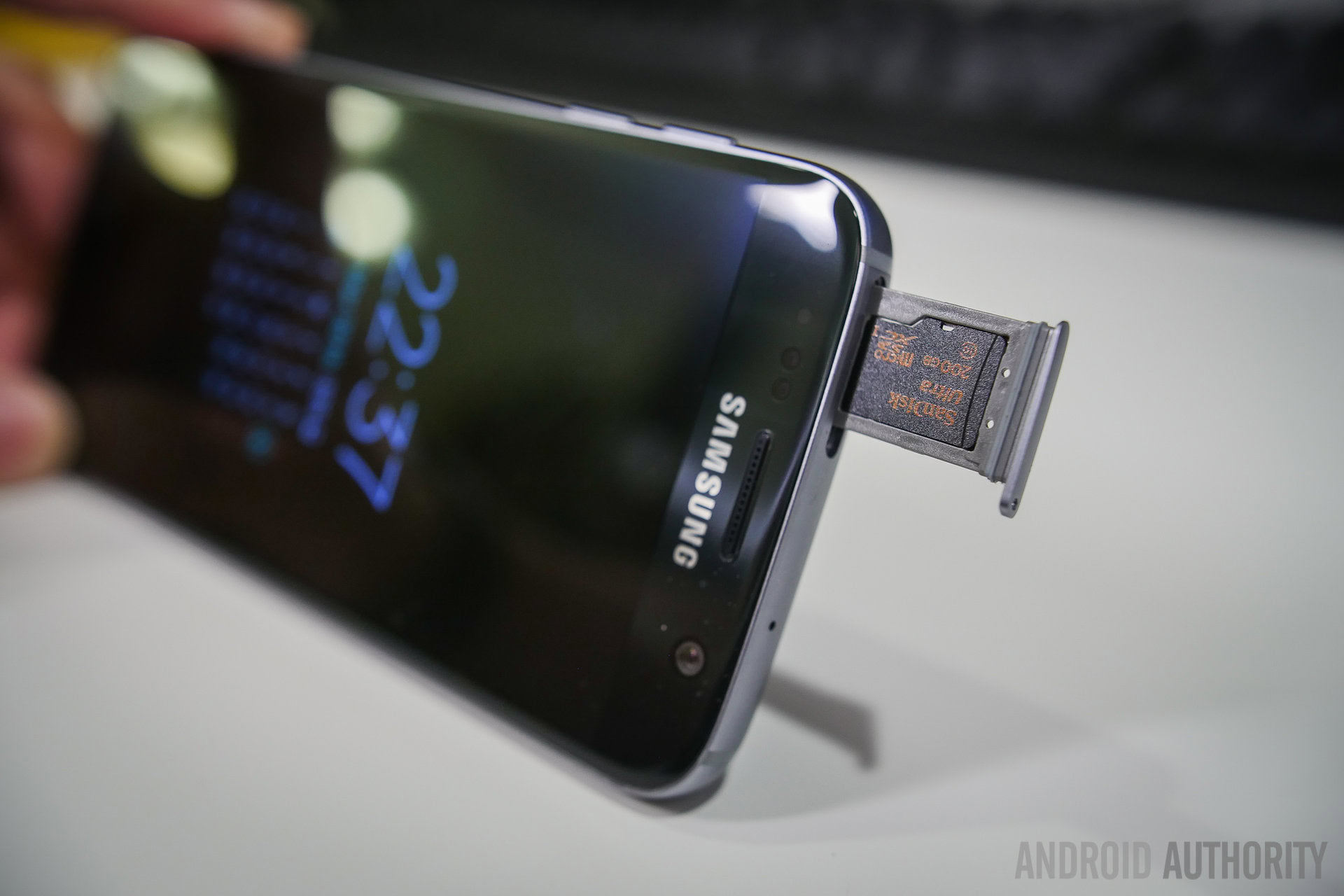
Without doubt, one of the biggest disappointments in the Galaxy S6 lineup was Samsung’s decision not to offer expandable storage. Long seen as a company that would continue to offer microSD expansion and removable batteries in its smartphones at a time its rivals were moving away from doing so, the Galaxy S6 thus disappointed many users.
In the Galaxy S7 however, Samsung has sought to correct one of the biggest user concerns from last year and microSD card expansion now makes a return. Last year, Samsung offered its smartphones in three storage flavours, but this year most markets will only offer the 32GB version. Samsung isn’t making a 128GB version of the Galaxy S7 – probably as the 128GB Galaxy S6 barely sold thanks to its extremely high price tag – and even the 64GB version is a rarity, so allowing you to expand the base 32GB storage almost became a necessity.
The Galaxy S7 runs on Android Marshmallow, which brings with the new Adoptable Storage option, but before you get too excited, it’s worth noting that Samsung has left this feature out of the Galaxy S7. As Andrew Grush puts it in our Galaxy S7 Edge review:
For the uninitiated, adoptable storage basically takes your microSD card and your internal storage and combines them into one pool, automatically installing apps and other files wherever the OS sees fit. With this adoptable storage, your memory card is basically ‘locked’ to that device and this is one of the reasons Samsung officially states for leaving out the feature.
There is good news however, as Paul O’Brien of MoDaCo, revealed that it is actually possible to enable this feature on the Galaxy S7. Rather than disable it entirely, Samsung hid the option in the settings and with a little tinkering of ADB, you can re-enable the option.
Of course, not everyone wants to power up ADB so we can also confirm that you’re also able to transfer many of the apps on the Galaxy S7 over to the microSD card. It’s certainly not the same as being able to bond the two together to have even more storage, but it is a welcome alternative who don’t feel comfortable about tinkering with their smartphone.
Like other Samsung smartphones, you can still hot-swap the microSD cards by simply pulling out the tray (after ejecting the memory card of course) and then reinserting the new one. What about the SIM card we hear you ask? Well, the Galaxy S7 is also the first Samsung smartphone that allows you to hot-swap the SIM card, meaning you can change SIMs and pick up coverage again without needing to restart your phone. This won’t affect most users, but for someone who changes SIM cards quite often, this is definitely a welcome feature to have.
Protection against accidental spills
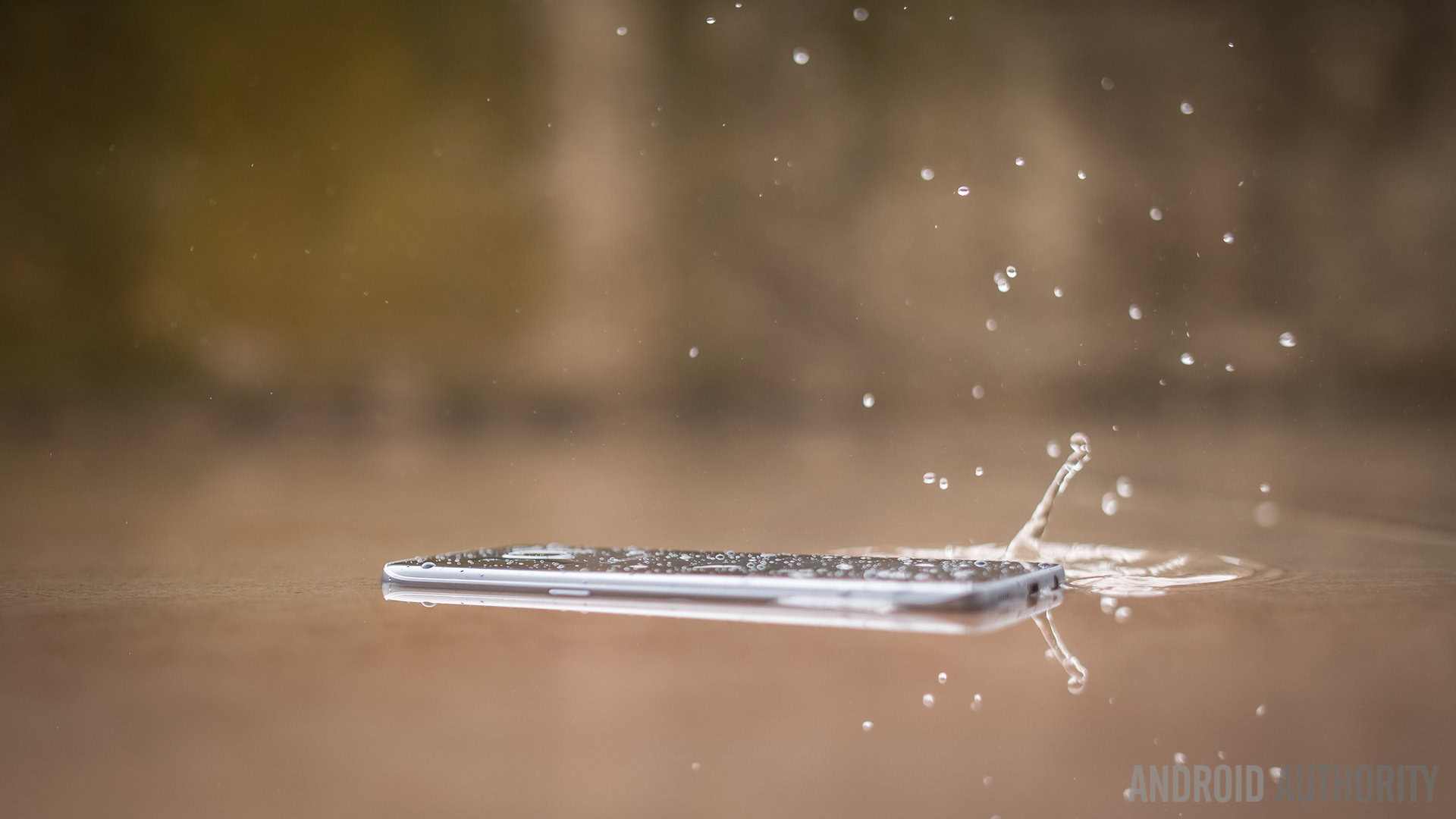
Probably every smartphone owner’s worst nightmare is accidentally dropping the phone in a toilet, in a puddle, in the swimming pool or somewhere else that liquid gets inside and causes havoc. After all, liquids and electronics don’t mix, right?
Alongside microSD, Samsung opted to remove water resistance from its Galaxy S6 line up, well sort of. Although the main Galaxy S6 family didn’t have this feature, the company did make a Galaxy S6 Active that offered the substance of the Galaxy S6 in a redesigned body. This year however, the company has managed to include water resistance in both the Galaxy S7 and the Galaxy S7 Edge.
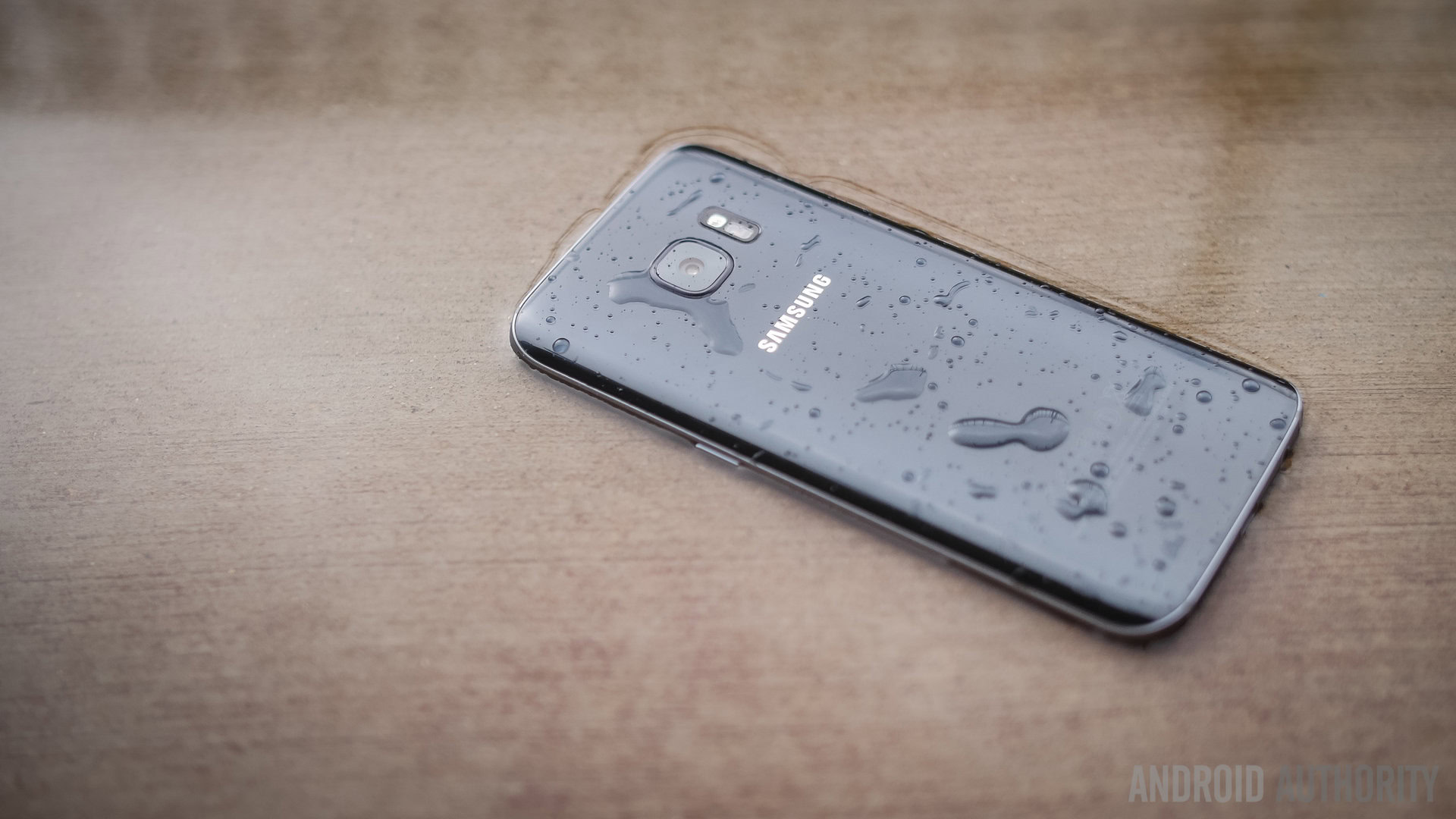
The Galaxy S7 is IP68 rated, meaning it should able to handle being submerged in water up to 1 metre for up to 30 minutes. Before you jump off the deep end however, we wouldn’t recommend you take this swimming or attempt to throw it in the sea, but rather the feature will provide protection if the worst should happen. For example, you should be covered if you spill a drink on your phone, it ends up in sink or you drop it in the toilet.
It’s worth noting however that, while the water resistance is all internal, the Galaxy S7 does use a gasket on the inside of the phone and the gasket’s seal is broken when you remove the microSD/SIM card tray. As such, if the SIM tray isn’t firmly inserted into your phone, you may find that you end up with a water damaged phone, and it’s highly unlikely that the manufacturer’s warranty will cover you should this happen.
Fingerprint scanner

One of the major improvements in last year’s handsets saw Samsung move away from the swipe-based fingerprint sensor on the Galaxy S5 to a more traditional touch-type sensor that’s much more accurate and faster.
The Galaxy Note 5 bought even more improvements to the speed and reliability of the sensor and while the sensor does seem to be the same one as found in last year’s handsets, it does seem a lot more refined to me. I’ve found the fingerprint sensor to be faster to recognise a fingerprint and unlock the handset and, unlike both, the Note 5 and the Galaxy S6, I’ve not had an issue with it not reading my fingerprint on the first attempt.
Speakers, connectivity, and the rest
These changes and improvements aside, there’s very little else that’s different under the hood of the Galaxy S7 as, just like the display, Samsung has opted to merely tweak the performance.
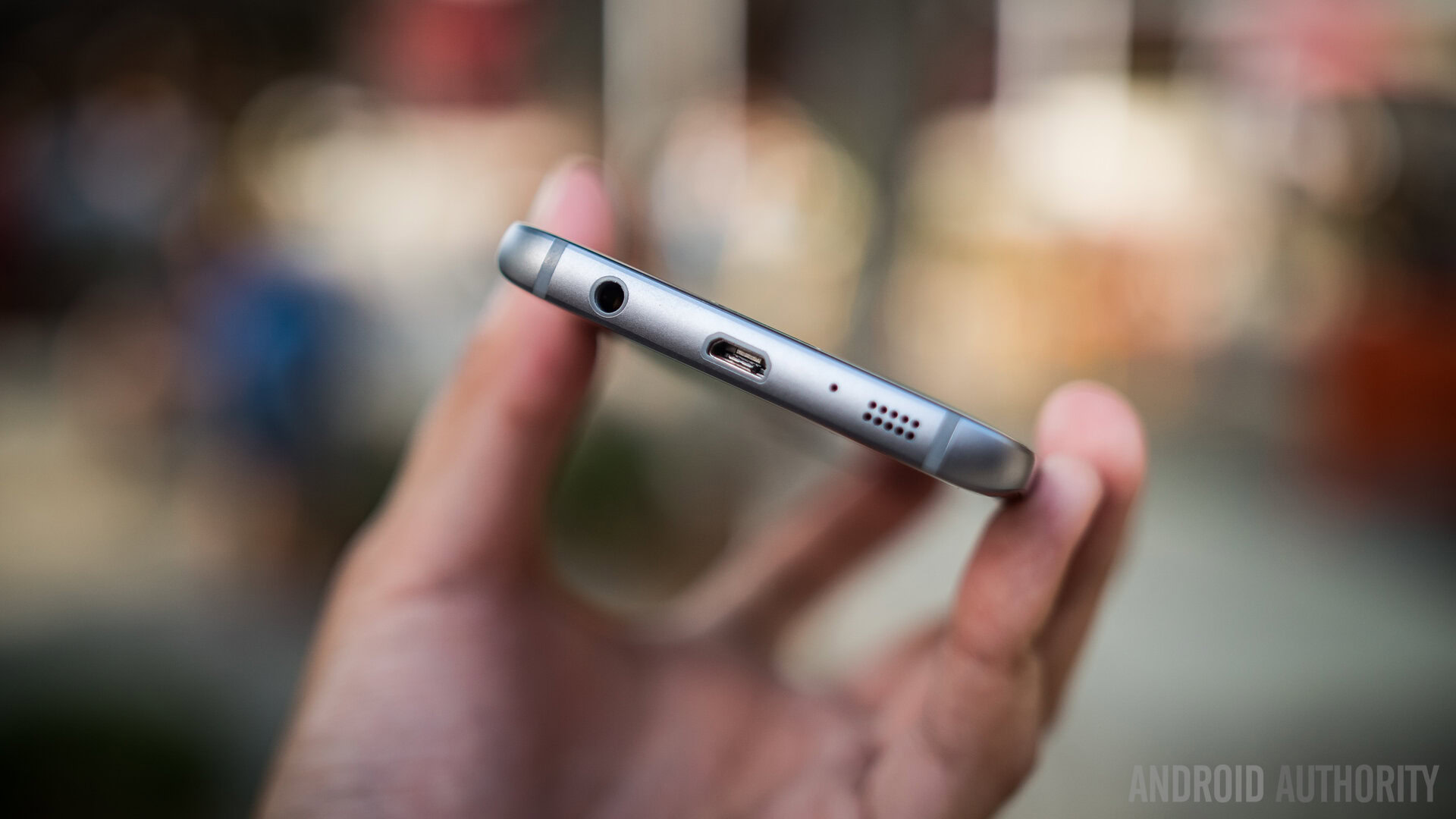
A particular complaint with past Samsung devices is the company’s approach to RAM management, which many have said is rather aggressive, but with the Galaxy S7, there have been no particular issues to note. Of the 4GB RAM included in the handset, 515MB is reserved by the system (and doesn’t show up in any RAM tests), while average available RAM is between 750MB and 1.5GB depending on the apps that are running.
Like last year, the Galaxy S7 also has a bottom mounted speaker and although many found it to be mediocre in the Galaxy S6, Samsung hasn’t really been able to make any improvements in this department this year. The poor speaker performance may be a by-product of the waterproofing, but equally, the speaker is a typical Samsung speaker that doesn’t compare to most smartphones on the market. As with previous years, the speaker is something you’ll have to compromise on, for sake of all the other features that the Galaxy S7 has to offer.
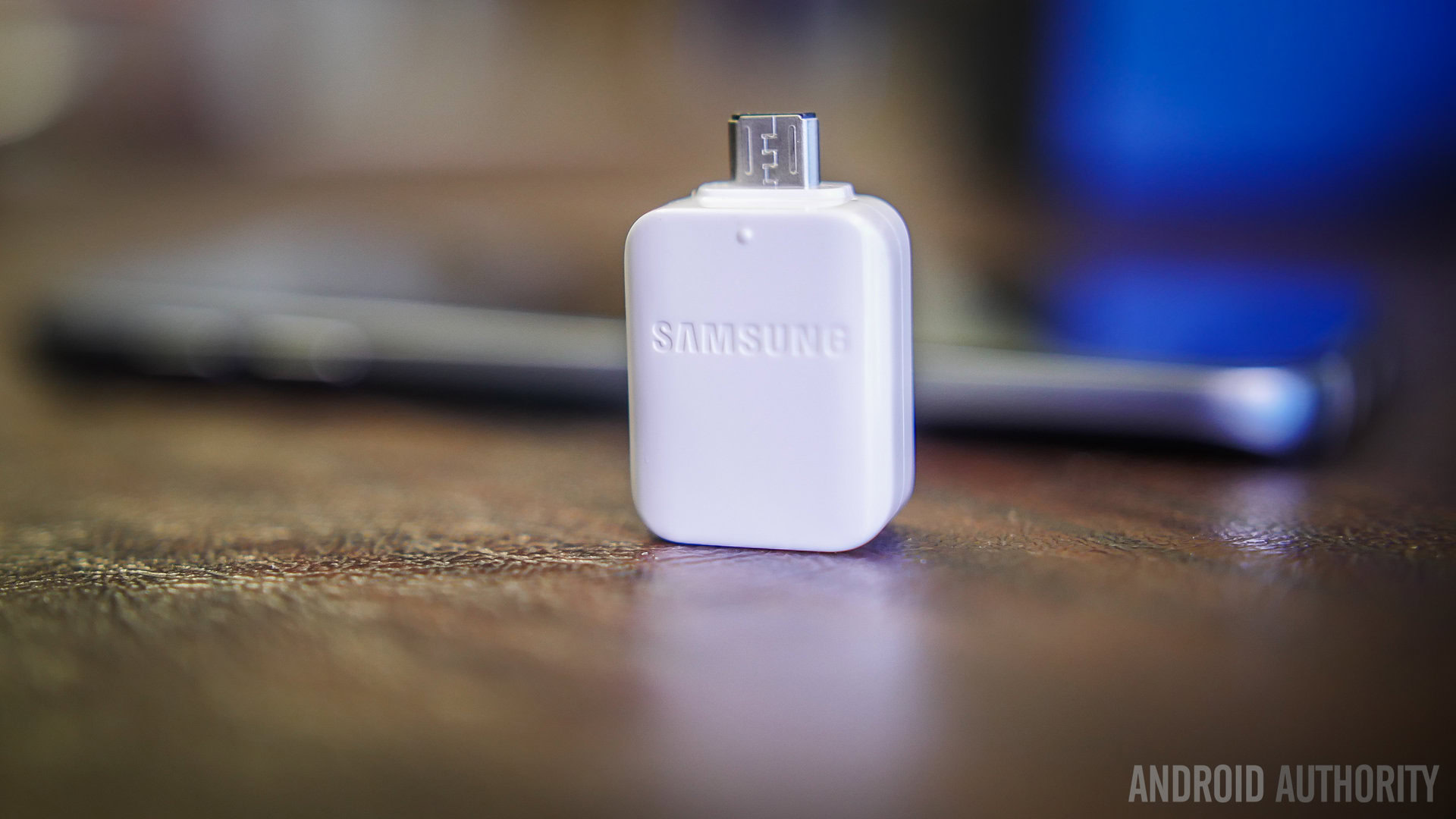
One particular feature that we do like is Samsung is raising awareness that the Galaxy S7 supports USB On-The-Go, right out of the box. Included in the retail packaging is an adapter that lets you connect the Galaxy S7 to another microUSB Android smartphone in order to transfer your media over easily, but this same adapter allows you to connect a hard drive to your smartphone. Together with microSD, there really is a multitude of ways that you can expand the on-board storage.
Also under the hood is LTE Cat 9 support, meaning you can download on the go at speeds of up to 450Mbps. Given that the majority of mobile networks currently only support speeds of up to 300Mbps, this means the Galaxy S7 is future proofed against the next generation of mobile network rollout. In some testing, I managed to reach peak speeds of 150Mbps, which is the theoretical maximum of the network SIM card I’m using in my Galaxy S7. One for the geeks sure, but if this is important to you, it’s certainly good to know.
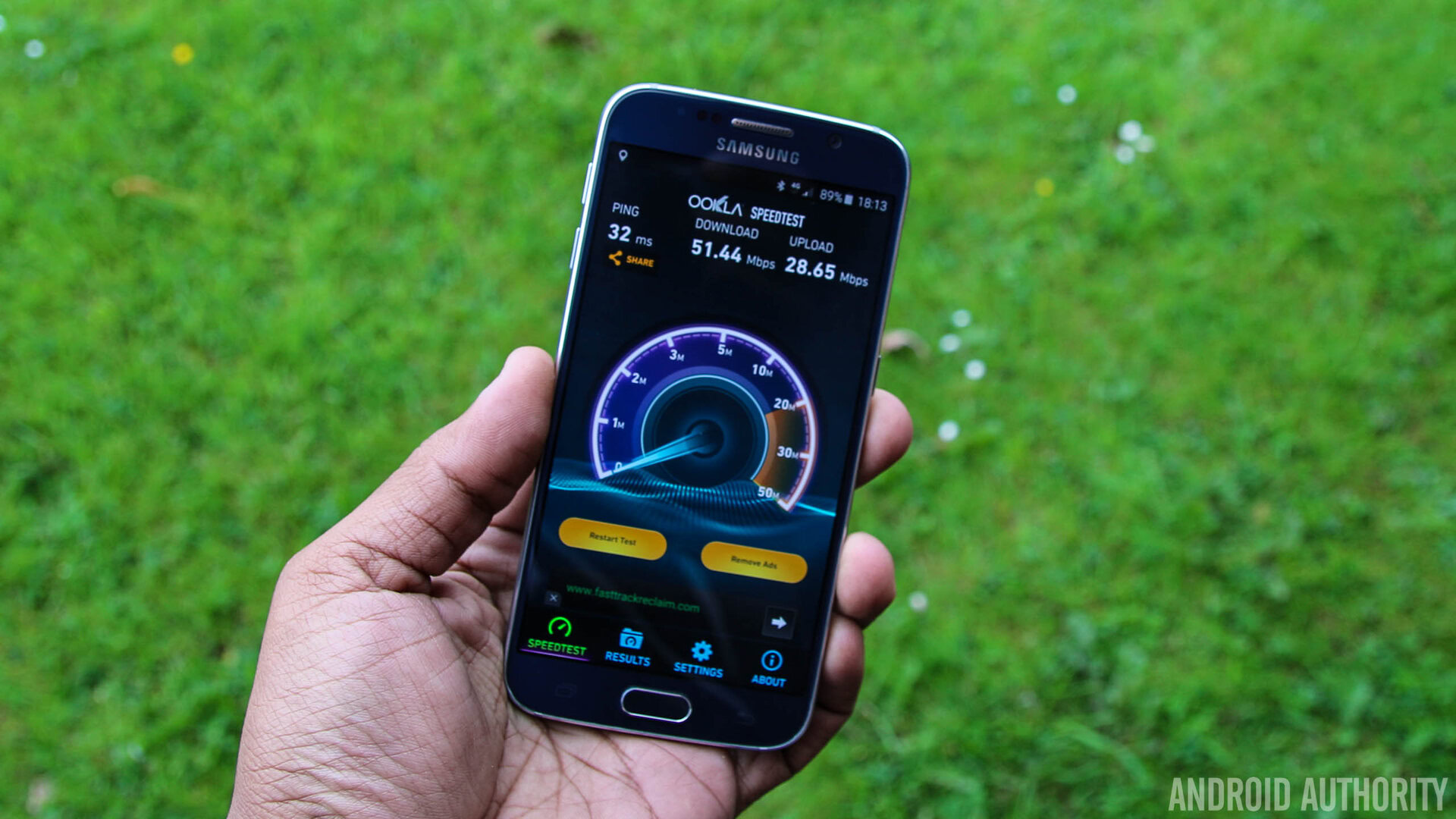
Overall, Samsung has certainly made some interesting changes to the hardware under the hood of the Galaxy S7 this year. The decision to switch back to the more familiar two-processor strategy is certainly not without its critics, but the addition of microSD expansion, USB On-the-go support and IP68 resistance makes the Galaxy S7 one of the most feature-packed smartphones on the market.
Battery Life
Arguably one of the biggest disappointments with last year’s Galaxy S6 line up was the battery, as Samsung ditched the removable battery and gave users a stringent battery capacity as well. At 2550mAh, the Galaxy S6 battery struggled to make it anywhere near a full day’s usage, and although the Galaxy S6 Edge and Galaxy S6 Edge Plus had larger batteries – 2600mAh and 3000mAh respectively – the situation was far from ideal.
This year however, Samsung has increased the battery capacity but does it get it right, and does the Galaxy S7 have enough juice in the tank to power you through a whole day or more? Simply put, it definitely does. At 3000mAh, the battery in the Galaxy S7 is 17.64% larger than the Galaxy S6 and, coupled with optimisations in the power efficiency of the new processor, this means it can deliver anywhere from 3.5 to 5 hours Screen on Time (SoT) from a single charge depending upon your usage.
Digging further into the battery life, Josh and I did notice some discrepancies although this is likely due to differences in our usage. Josh regularly achieved 4 to 5 hours SoT while my usage – which involved a fair amount of phone calls – saw me usually fall between 3.5 hour and 4.5 hours SoT. In order to get a slightly more technical understanding of the battery life – and also measure if there was any difference between the Snapdragon and Exynos versions – we powered up the PCMark “work battery” test. This test recommends that users calibrate brightness to 200 cd/m², in order to provide a fair comparison against other results, but we decided to turn off auto brightness and crank up the brightness to full. Our reasoning was that this would hopefully give you a “worst case” scenario of what to expect from the Galaxy S7 battery.
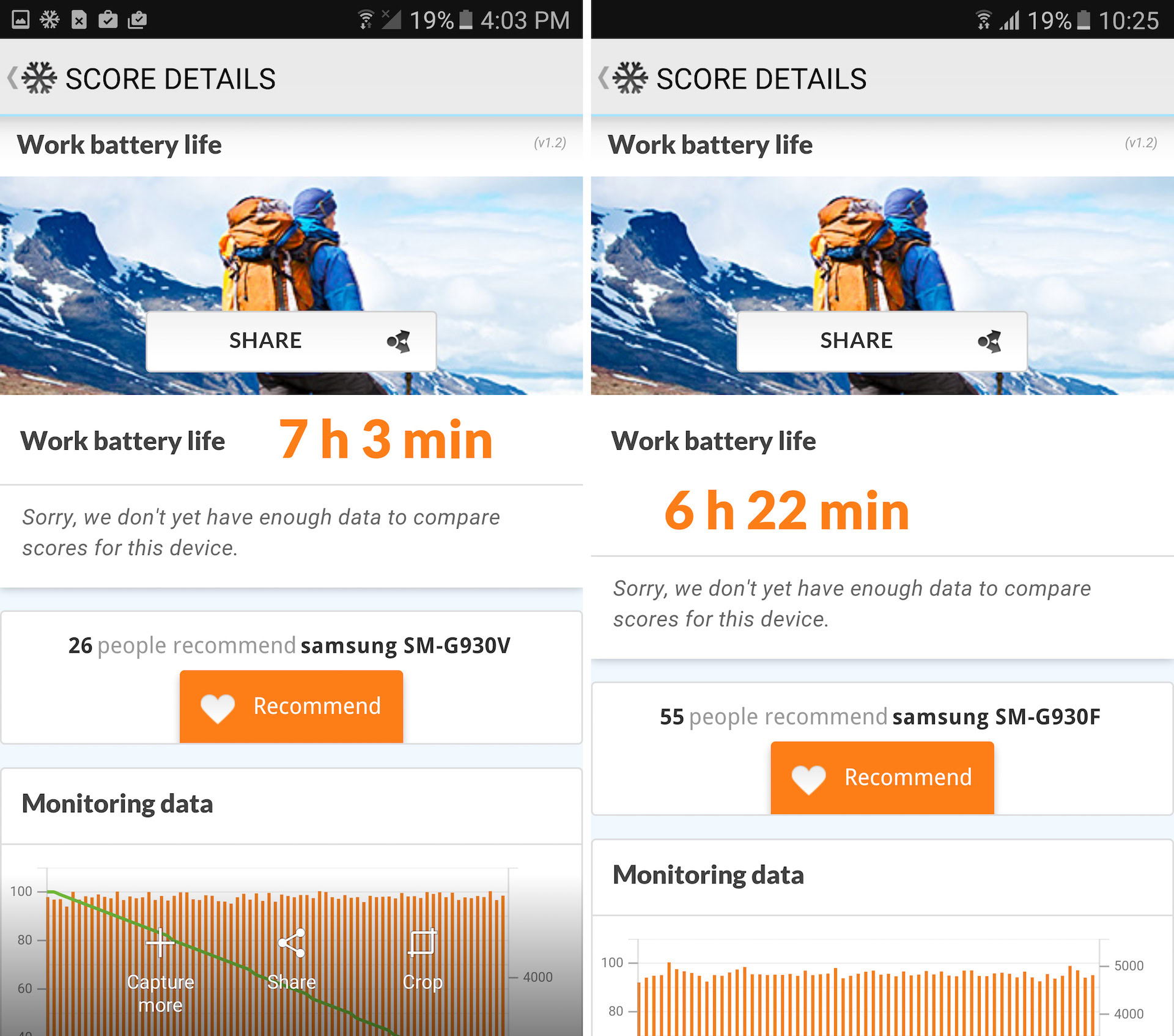
Our results for the Exynos version suggest a “work battery life” of 6 hours and 22 minutes, while the Snapdragon version scores an even higher, 7 hours and 2 minutes. By way of comparison, the Galaxy S7 Edge scores 6 hours and 49 minutes for the Exynos variant and 6 hours and 40 minutes for the Snapdragon version. Although the Snapdragon Galaxy S7 does seem to have the edge, the results suggest that battery life is still more than satisfactory on either model. Interestingly, our “worst case” battery life testing is on par with the optimal average testing for the Galaxy S6, showing just how far the battery life has come; although the battery is larger, the gains are much bigger than the 18% extra capacity would suggest.
For those wondering how the Galaxy S7 would fare at an optimal brightness level, PCMark’s average scores reveal better average battery life for the Exynos version, which comes in at 8 hours and 8 minutes, while the Snapdragon version comes in at an equally respectable 7 hours and 22 minutes. This suggests that the efficiencies of the octa-core processor do make a difference over a day’s average usage, but whichever version you opt for, you can be assured that bad battery life is most definitely not a concern.
The Exynos model average 8 hours and 8 minutes, while the Snapdragon averages 7 hours and 22 minutes.
If you do need to reach for a charger as you’ve used the phone heavily, you can rest assured that Samsung has included Quick Charge 2.0 on both variants of the Galaxy S7. Yes, it is 2.0 and 3.0 but this isn’t necessarily a bad thing, as there is very little difference in the charging speeds between the two.
Samsung claims the Exynos model can charge to 50% in under 30 minutes and in my testing, I would say this is accurate, with an average charge of 40 to 48% in the allotted time. Testing this further, the battery can take up to 2 hours to charge to full but generally, it will charge in approximately 1 hour and 30 minutes. There’s very little difference in the charging speed between using Samsung’s proprietary Adaptive Fast Charger (that’s included in the box) or a generic Qualcomm Quick Charge 2.0 charger, although the former does appear to be ever so slightly faster.
Like the Galaxy S6 family, both variants of the Galaxy S7 also support fast wireless charging, but this is where I’ve felt somewhat disappointed. From the Galaxy S6 to the Galaxy Note 5, Samsung certainly improved the wireless charging times, but with the Galaxy S7, the company doesn’t seem to have made any gains. Overall, fully charging the battery from empty using a Samsung wireless charging pad (that was designed for the Galaxy S6 Edge Plus mind you) takes between 3 and 4 half hours, although the wireless charging pad designed for the Galaxy S7 may improve this speed.
Camera
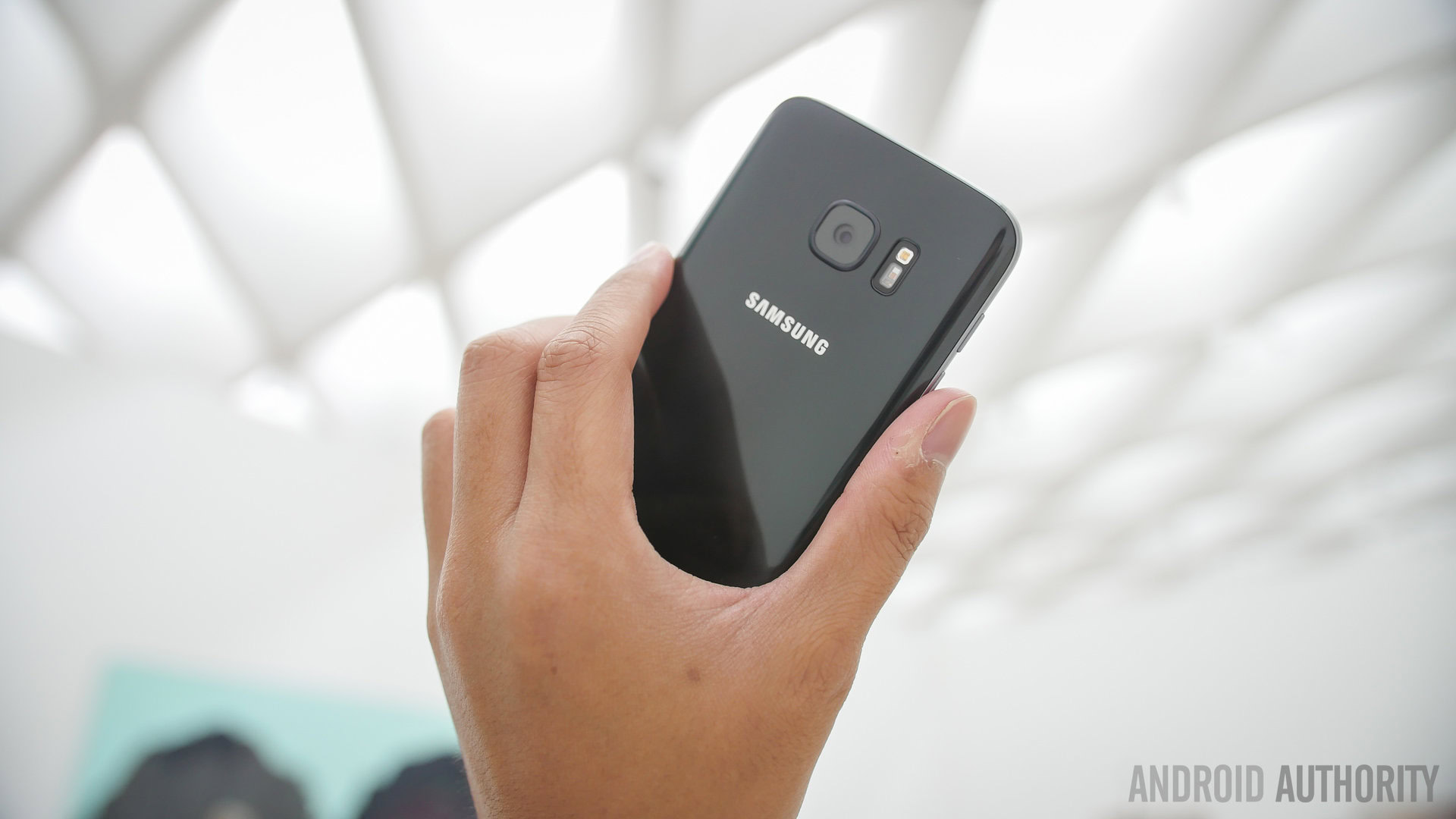
Prior to the Galaxy Note 4’s launch at the end of 2014, Samsung’s smartphone cameras were average at best, but then came a new era of smartphone cameras for the Korean OEM. Arguably one of the best smartphones that Samsung has ever released, the Note 4 bought with it the first Android camera that was universally recognised as being best-in-class in the smartphone market.
Last year saw Samsung build on this, with exceptional cameras built into both, the Galaxy S6 line up and the Galaxy Note 5, and in the latter, we had a smartphone camera that – albeit with some faults – could be relied on to always capture a scene. Yet, while other manufacturers – such as HTC and even Apple – had focused on providing larger pixels with lower megapixel counts, Samsung stuck to its guns and delivered quality through a larger amount of pixels, until now that is.
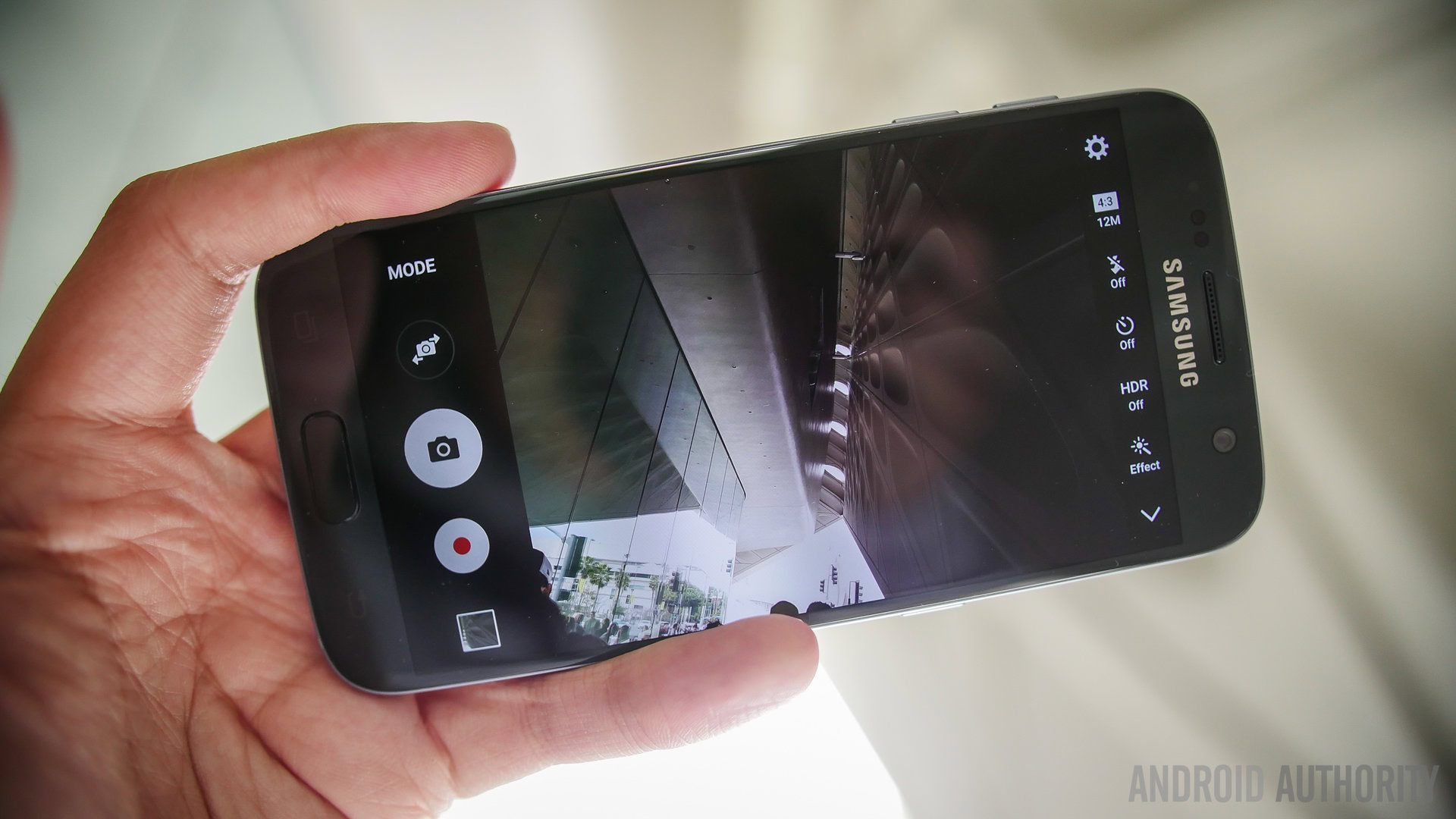
Following the lead of the Nexus 6P – which trades a higher megapixel count for larger pixel size and hence, much better lowlight performance – the Galaxy S7 drops the megapixel count from 16MP (in the Galaxy S6) to 12MP, but brings with other improvements. These include an f/1.7 aperture lens (versus f/1.9 last year), Optical Image Stabilisation, Phase Detection autofocus, LED flash and dual pixel technology. On paper, the drop in pixels may lead you to believe the camera is actually worse, but as we all know, there’s more to cameras than just the pixel count.
Is the new camera better than last year though? Simply put – yes and no; it very much depends on what you expect from your smartphone’s camera. I’ve personally found the camera is more than satisfactory on the Galaxy S7 in good lighting, but at the same time, it’s not quite as sharp as last year’s smartphones. The drop in number of pixels has also seen Samsung increase the amount of noise reduction, which further results in slightly less sharp images than you might be used to from Samsung cameras.
HDR on Samsung smartphones has previously been quite forceful, but the company has made it subtler in the Galaxy S7, resulting in a less profound effect on overall images. That being said, it does still work well to bring back detail from the shadows and soften blown out areas of the image so it’s still a very effective mode to have in your arsenal.
While the daylight images have potentially taken a slight drop, the Galaxy S7 truly shines in low light mode. Thanks to the larger pixel size – the Galaxy S7 now sports pixels with 1.4µm size versus 1.12µm in its predecessor – the lightening fast autofocus and the dual pixel technology, Samsung has been able to deliver excellent low light quality in the Galaxy S7 camera. In most low light conditions, you’ll definitely be happy with the Galaxy S7’s camera but in extreme low light, there does seem to be a yellow hue cast across the images, along with overexposed highlights and a lot of noise reduction. Optical Image Stabilisation does a good job of helping to improve overall low light images and, in all but the most extreme conditions, you’ll find the Galaxy S7 camera to be pretty reliable.
On the video side, there rear camera comes equipped with 4K Ultra HD video recording and OIS helps to keep videos relatively stable. The audio captured is mostly crisp and clear and overall, there’s nothing worthy to note about the video capture performance.
The front camera is the same 5MP camera found in last year’s Galaxy S6 but, just like the rear camera, it has been treated to a wider aperture – again, it’s now f/1.7 from f/1.9 last year. Selfie images are relatively good quality and Samsung’s skin tone feature – which is similar to the Beauty mode found in other handsets – does well to soften skin texture and make you look younger.
There’s also a wide selfie mode, which is nothing more than a glorified panorama for the front facing camera, and this lets you capture more of the scene or fit more people into your image. Before you try and take a selfie on stage at the Oscars however, it’s worth noting that there’s some very obvious stitching in the selfie panorama so images aren’t quite as sharp as they maybe could have been. One particular nice feature in the front camera – as Josh points out – is that you can shoot QHD video using the front facing camera, rather than Full HD on past devices (even if they were technically capable of shooting QHD).
Overall, the Galaxy S7 camera is probably one of the biggest changes compared to last year’s handsets and it brings with it both, positives and negatives. Daylight pictures have arguably taken a slight drop, but the low light performance has been treated to considerable gains. All things considered, I’d have to say that the Galaxy S7 has a very reliable camera that’s definitely on par with, if not better, than the camera on past Galaxy smartphones.
Software
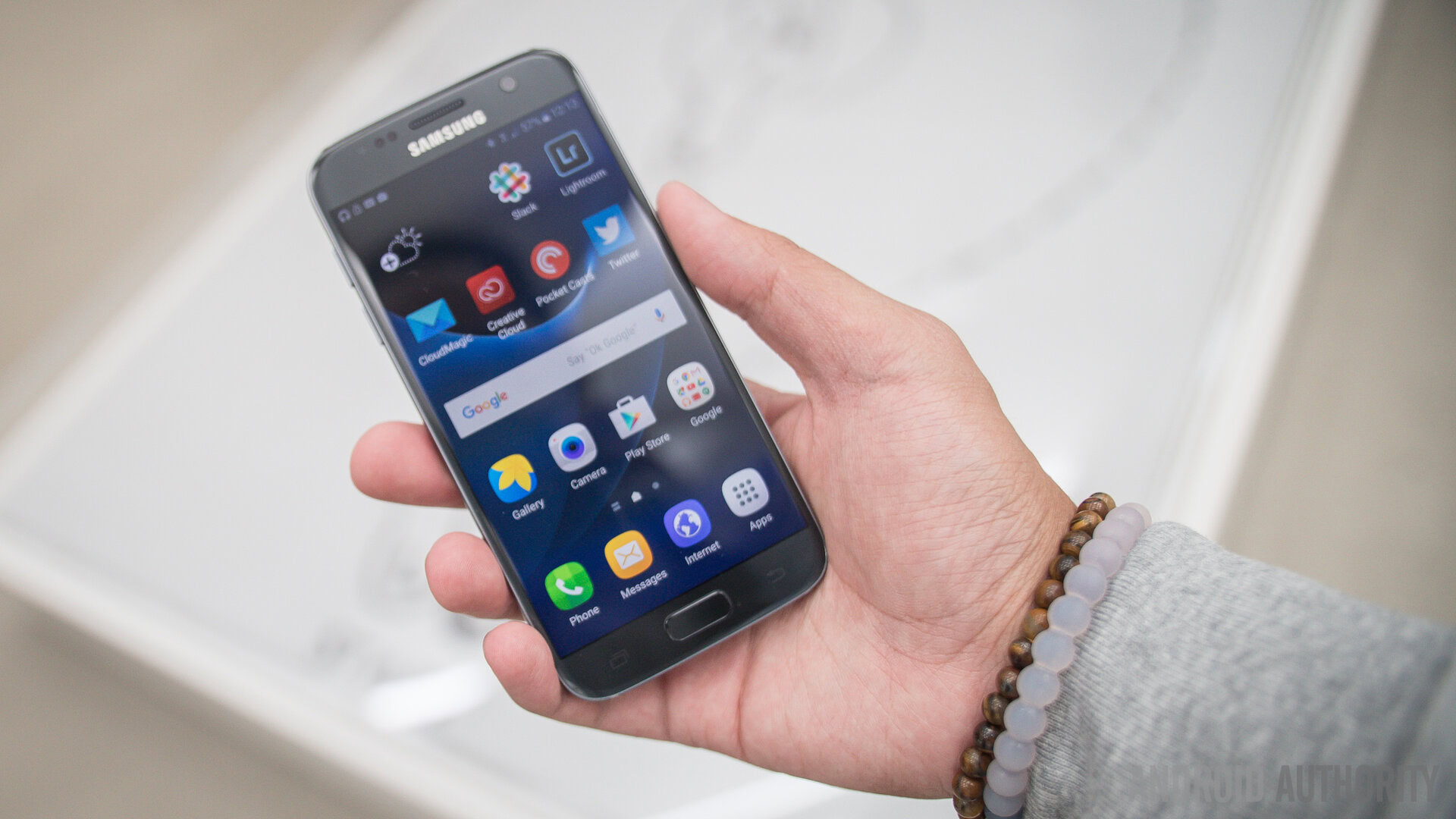
While the Galaxy S6 and Galaxy S6 Edge were recognised for bringing about a stark change in Samsung’s design philosophy, last year’s flagships were less recognised for their software. Yet, in the few months since the Galaxy Note 4 was released, Samsung had sought to revolutionise not just its hardware but also its software, and the Galaxy S6 family was a sign of Samsung’s new approach to software.
For many years, TouchWiz has had a particularly bad stigma attached to it, and rightly so, as the interface was clunky, slow and lacking in anything that remotely resembled optimisation. Yet, the Galaxy S6 family was the entire opposite of this and ushered in a new era where TouchWiz was, well, nothing like TouchWiz before it. In 2015, Samsung trimmed large amounts of the preloaded apps and features (i.e. the bloatware) that made its smartphones slow, toned down the amount of annoying tutorials and delivered an out of box experience that was surprisingly pleasant to use.
the overall experience feels like someone other than Samsung actually created it.
As someone who has used Galaxy smartphones for several years, the transformation last year was certainly impressive, and in the Galaxy S7, Samsung has continued to optimise its software. Unsurprisingly, the Galaxy S7 runs on Android 6.0.1 Marshmallow out of the box, and brings an experience that’s rather akin to the Marshmallow update for the Galaxy S6 family. Design-wise, TouchWiz on the Galaxy S7 sees Samsung drop the bright colours and blue and green tones of TouchWiz of old, and replaces them with blue and gray tones that are more pleasing to the eye, and infinitely less likely to alienate users who disliked the company’s colour scheme. Samsung has also improved the animations in the UI to make them snappy and more responsive and the overall experience feels like someone other than Samsung actually created it.
With both, the Galaxy S6 family and the Galaxy Note 5, there were reports that Samsung was aggressively managing RAM by shutting down applications, but with the Galaxy S7, this seems to be a thing of the past. Yes, there are certainly areas of the launcher that suffer from slight stutters that have become synonymous with TouchWiz, and there is a slight delay when swiping into Upday (international) or Flipboard (USA), but overall, TouchWiz is fast, responsive and a pleasure to use.
Rather than focus on every individual feature that TouchWiz has to offer (and make this review thousands of words longer than it already is), we plan to explore the software in more detail – and its evolution over the past few years – in an in-depth feature focus that will be coming to you in the weeks to come.
That being said, there are a few features that we wanted to focus on, and most of these are returning from last year’s handsets, albeit with a few (welcome) tweaks and improvements.
Theming just got much much better
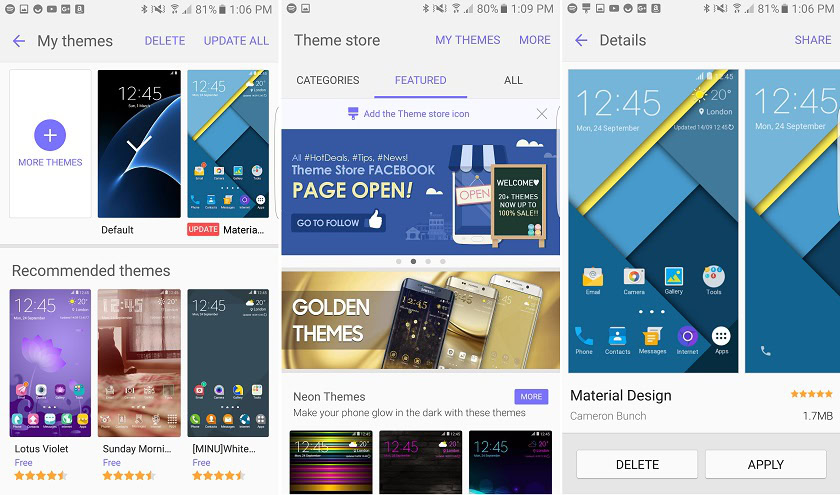
With the launch of the Galaxy S6 family, Samsung introduced a new Theme engine that allowed you to customise the look and feel of your smartphone without too much fuss or bother. However, as we covered back then, the number of themes available was certainly very sparse and the theme engine was more of promise for the future than a feature you would use heavily in the present.
Fast forward a year and the theme store is a very different place now with hundreds of different themes to choose from. If you’re a stock Android fan, there’s themes that will turn your handset into an experience more akin to something out of Silicon Valley than Korea. Lifestyle lover, obsessed with travel, interested in landmarks or just want some funny animals on your screen? There’s tons of them and more – although it’s certainly not perfect, the theme engine has grown leaps and bounds since last year, and there’s no reason to believe this won’t continue for the foreseeable future.
Smart Dialer
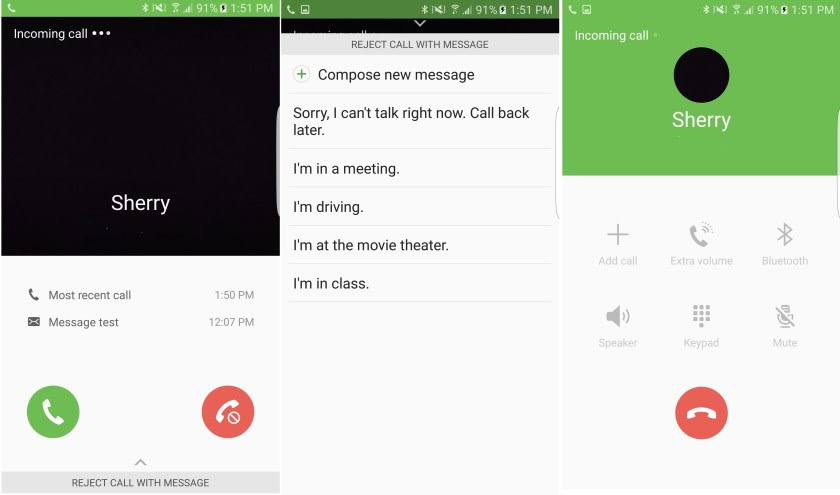
The dialer included in TouchWiz is, by far, my favourite dialer across any Android OEM skin. The dialler lets you set speed dials, displays suggested contacts as you type numbers (or the letters they represent) and can automatically scan unknown numbers to inform you whether they are known marketing or spam calls. If you don’t want to answer a call, it’s easy enough to reject them and send a predefined message, or even shoot them a custom message. All in all, if you like to make phone calls (like I do), then the dialer is certainly an experience you’re going to enjoy.
Multi-tasking
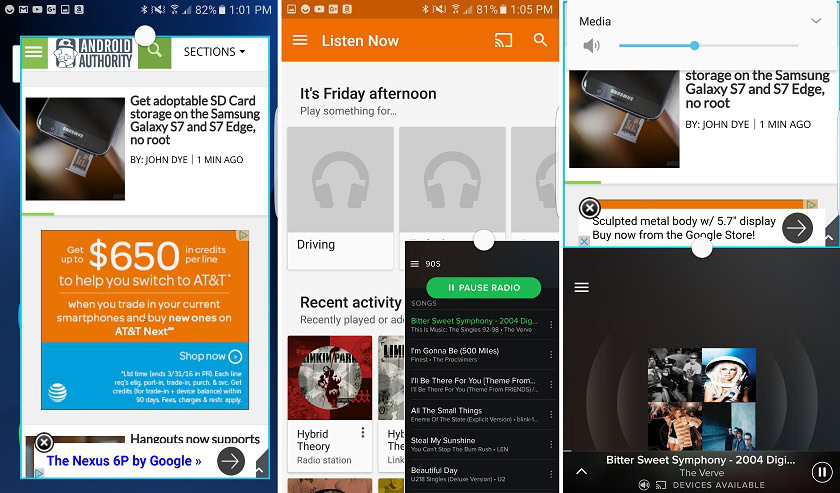
Mutli-tasking has recently become an area that every OEM has attempted to improve – including Google most recently with the Android N developer preview – but Samsung’s implementation is by far the most polished on Android. Through a couple of buttons in the recent apps menu, you can split two windows side by side, but my favourite feature is the ability to quickly turn almost all apps into a floating window that overlays whatever else you’re doing in the OS.

Unlike other OEMs, Samsung’s multi-window feature is supported by a ton of third party apps and, while there are some that don’t support the floating window or split screen (in particular games), the majority of apps you use on your phone should have support for this feature. In the Galaxy S7, the floating window seems to be more responsive and dragging content between windows in split-screen mode has certainly had some welcome improvements under the hood as well. Overall, Samsung definitely does multi-tasking well and in the Galaxy S7, the experience has been refined further yet.
Samsung Pay
Mobile payments is certainly not a new feature but the past twelve months has seen this growing market gain even further attention from OEMs. Apple introduced Apple Pay and bought mobile payments to mainstream consumers, and then both Samsung, and Google, have followed up with Samsung Pay and Android Pay respectively. As Lanh explains in the video below however, Samsung Pay has a key advantage over the competition, but it’s not perfect, yet.
Smart Manager
Prior to the overhaul of TouchWiz last year, Samsung’s UI had several smart features that allowed you to control elements such as RAM and battery, but these were spread out throughout the OS. In the Galaxy S6 (and onwards, including the Galaxy S7), these features have been combined into the new Smart Manager app, which makes it easier to see pertinent information about several features on your smartphone.
From killing different apps in the RAM manager to removing unnecessary data to free up space in the storage manager, there’s a lot you can do with the Smart Manager app. Furthermore, an entire section dedicated to battery lets you customise your power usage, turn on power saving or ultra power saving modes, and access battery usage information. You probably won’t use Smart Manager that often, but it’s a powerful tool to have on your phone and for the power user, it’s likely to be used quite frequently.
Gaming Tools
While the above features have been bought over from previous Galaxy smartphones, the Galaxy S7 does introduce a few new features; TouchWiz on the Galaxy S7 brings with it a new “Game Launcher” and the “gaming tools” that accompanies it.
The first of these puts all of your games into a special folder and allows you to launch games quickly, turn off notifications and turn on power saving mode while gaming. The Gaming Tools is likely to be much more useful however, as it enables a tiny icon that overlays your game in the corner of your screen (in a rather unobtrusive way it must be said), and expanding it lets you turn off alerts, lock the recent apps and back keys, minimise the game, take a screenshot, or even screen record your gameplay.
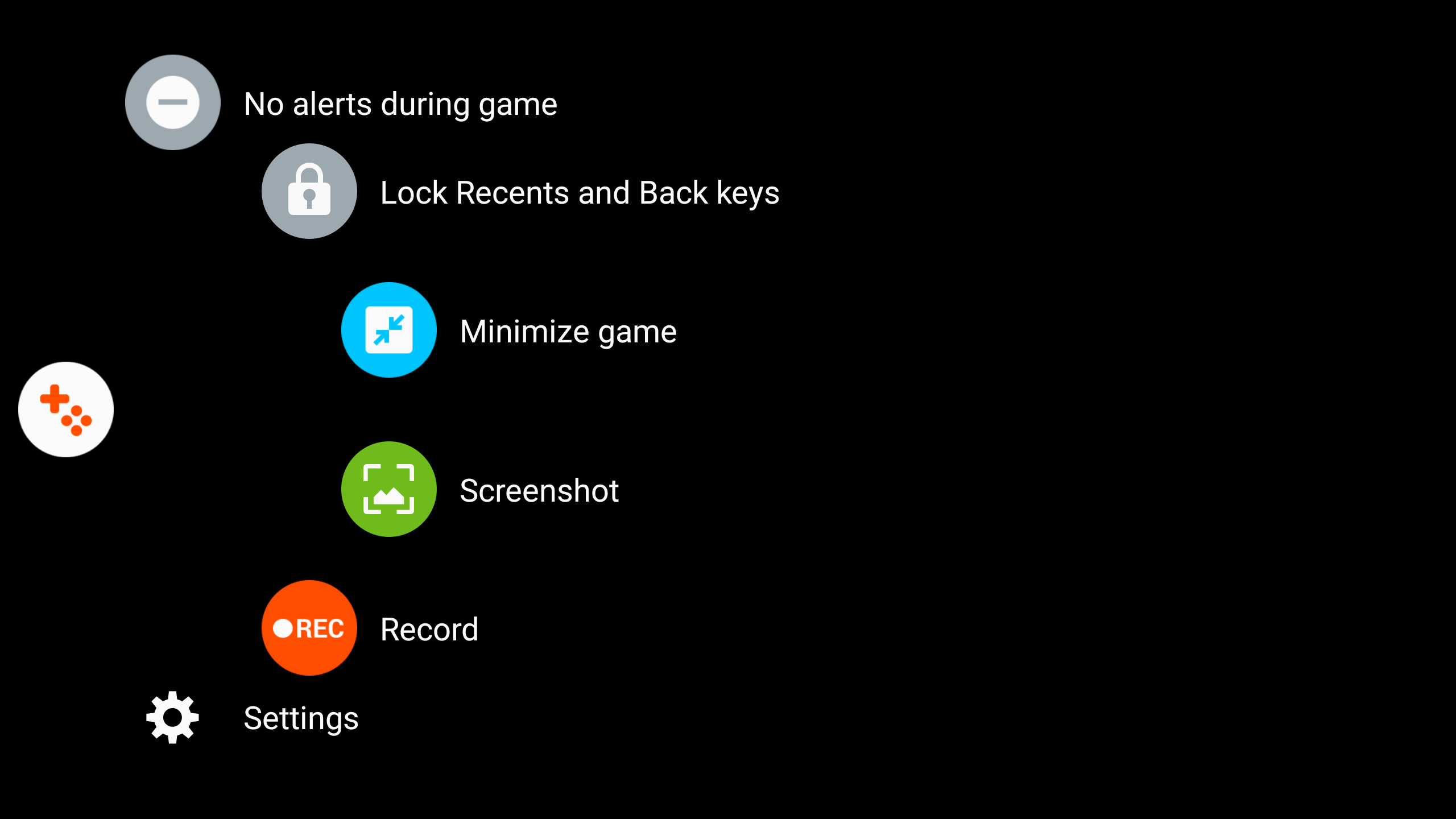
The actual usefulness of these features depends on how much of a gamer you are (and whether you’ve been afflicted by any of the “issues” it aims to solve), but for me, I’ve found them quite useful. Specifically, I always tend to hit the recent apps or back keys during a game so being able to lock them is certainly welcome, as is not being disturbed by notifications. If you’re someone who likes to show off your gaming skills, the screen record feature makes it incredibly simple to share your greatest in-game achievements.
Galaxy Labs – customisation runs deep
You know the old adage about how companies should learn from their customers? Well, with its Galaxy Labs, Samsung is aiming to do just this, by allowing Galaxy users to experiment with features and ideas it has, and vote on whether they like or dislike them. By far the most interesting of these (and probably the most controversial) is the ability to turn off the app drawer on your Galaxy S7. When enabled, this removes the app drawer and reverts the TouchWiz launcher to one more akin to the iPhone, or even LG’s new LG G5.
There’s been a lot of chatter recently about whether Google’s upcoming Android N update will see the app drawer being removed from Android, and while this is as yet unconfirmed (given the app drawer is present in the new Developer Preview), there’s no denying that Samsung is testing the waters here.
Most users probably won’t use this feature but it’s there if you want to try it out. Worth mentioning however, is that the Galaxy Labs option has been removed from Verizon and T-Mobile branded handsets, and has likely been removed from all carrier branded models in the US, although international users should find the feature in-tact.
TouchWiz – the verdict

As a long time Galaxy user, the transformation of TouchWiz over the past few years has certainly been stark, and with the Galaxy S7, Samsung has merely sought to refine the experience further. Although there is ever so slight lag in the launcher when loading up the home screen news service, the rest of the experience is fast, snappy and very responsive.
Personally, I have to say that this iteration of TouchWiz is probably the best that Samsung has ever offered, and while it’s certainly not perfect – which UI is after all – there’s a lot to like about TouchWiz. For many users, the thought of TouchWiz brings with it many bad memories of previous generations, but I can say with a large degree of certainty, that Samsung has reworked its software entirely since the Galaxy S5 and many of the concerns that users had, should no longer be present.
Gallery
Conclusion
While the Galaxy S6 and the Galaxy S6 Edge were very much about revolutionising Samsung’s smartphone portfolio, the company has instead set about refining the experience this year. Did it achieve this? Most definitely.
On the face of it, the Galaxy S7 may not seem like a major upgrade to the Galaxy S6, but the few tweaks that Samsung has made have all been in the right place and the contrast between the two handsets couldn’t be starker. Although I really enjoyed the Galaxy S6 last year, I did feel the handset’s shortcomings were enough to be a deal breaker, but thes Galaxy S7 is almost perfect in so many ways.
The Galaxy S7 very much epitomises the perfect smartphone
Considering the overall package, there’s very little that you could complain about. In fact, the only thing users might not be too happy about is the lack of a removable battery but the improvements in power efficiency, coupled with the extra capacity in the battery, really render this a moot point. In fact, I would go as far to say that there is nothing I would change as – display size aside, which is most definitely a personal thing – the Galaxy S7 very much epitomises the perfect smartphone.
Josh and I both agree, that Samsung’s small modest changes have shown us what could be the perfect smartphone. Josh takes it further saying:
In the era of micro USB, Samsung might just have shown us what the perfect smartphone could look like and in doing so, they’ve been able to show us, what might just be the final evolution of this era of smartphones.
However, as good as the Galaxy S7 is, the question remains as to where Samsung goes from here. While the Galaxy S7 appears to be the perfect handset for the market as it stands, we’re seeing a new era of smartphones ushered in, with USB Type-C and modular designs firmly on the radar of most companies. Until then however, Josh puts it best when he says:
You just might have one of the best smartphones available right here in the Galaxy S7.
And that’s the bottom line; following up a good smartphone is certainly no easy feat but Samsung has certainly shown us that it is more than capable of doing so. For me personally, the Galaxy S7 does offer what is, by far, the best smartphone experience on the market to date, but with a lot of the year – and plenty more flagships – still to come, we’ll see whether it still tops the smartphone pile come the end of the year.
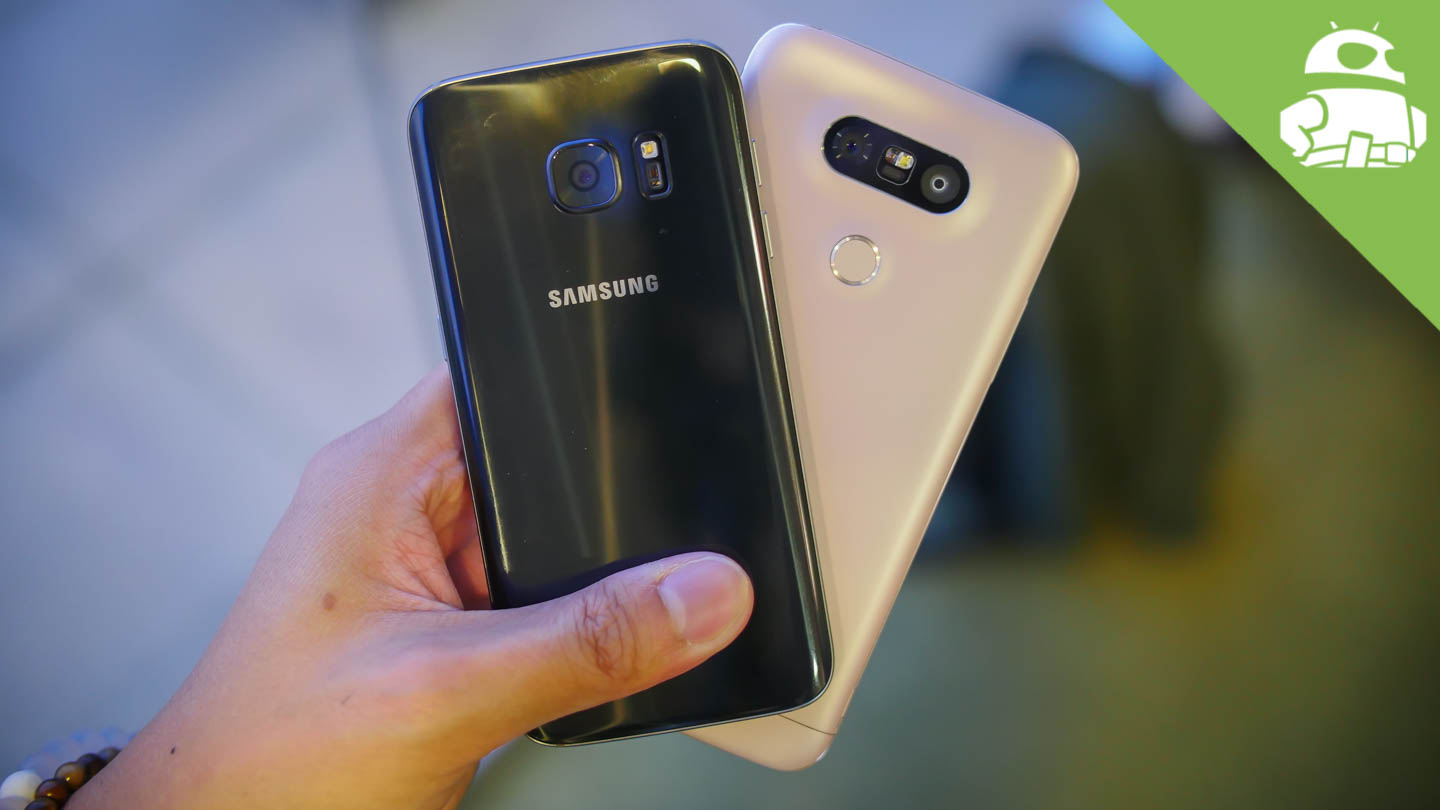
What do you think of the Galaxy S7 and do you plan to buy one? Is the Galaxy S7 Edge more your cup of tea, or maybe even the LG G5? Check out our hands on with LG’s latest flagship, and our full review of the Galaxy S7 Edge and let us know your views in the comments below!